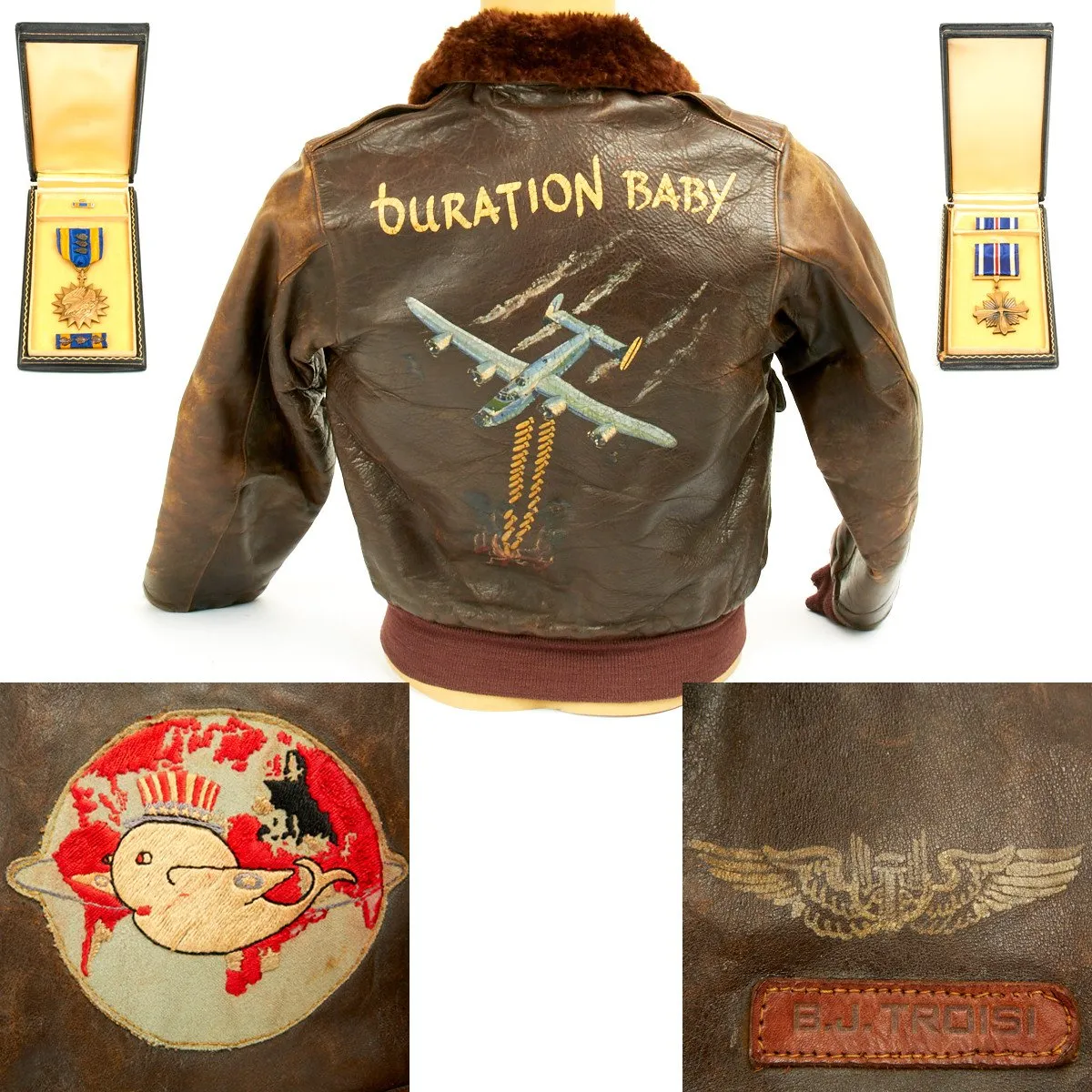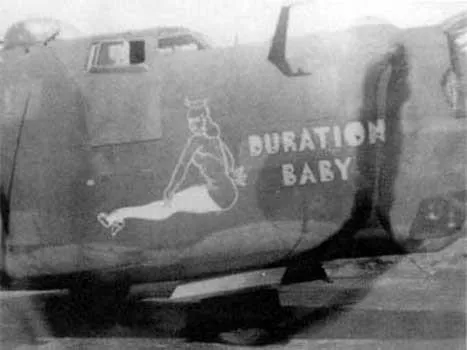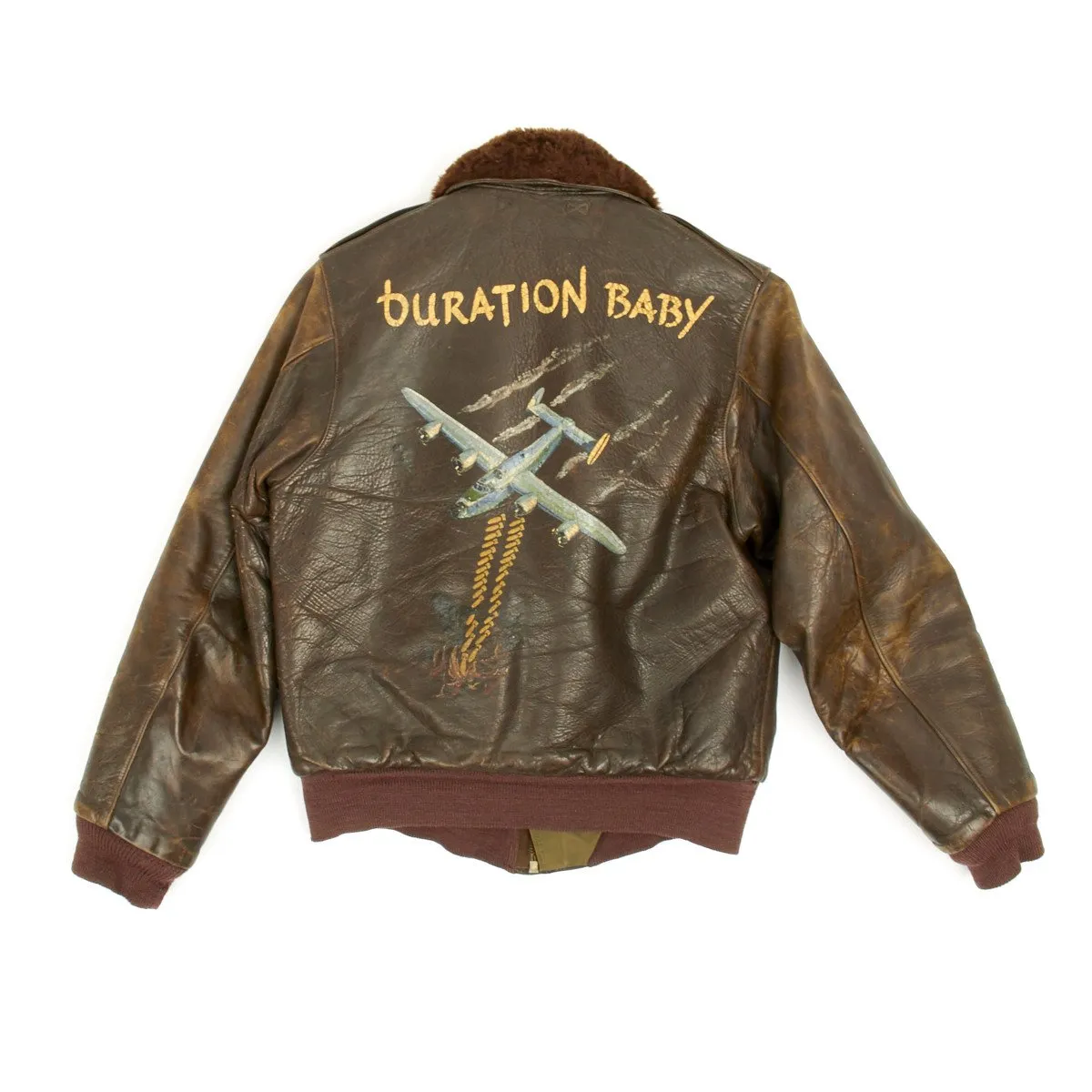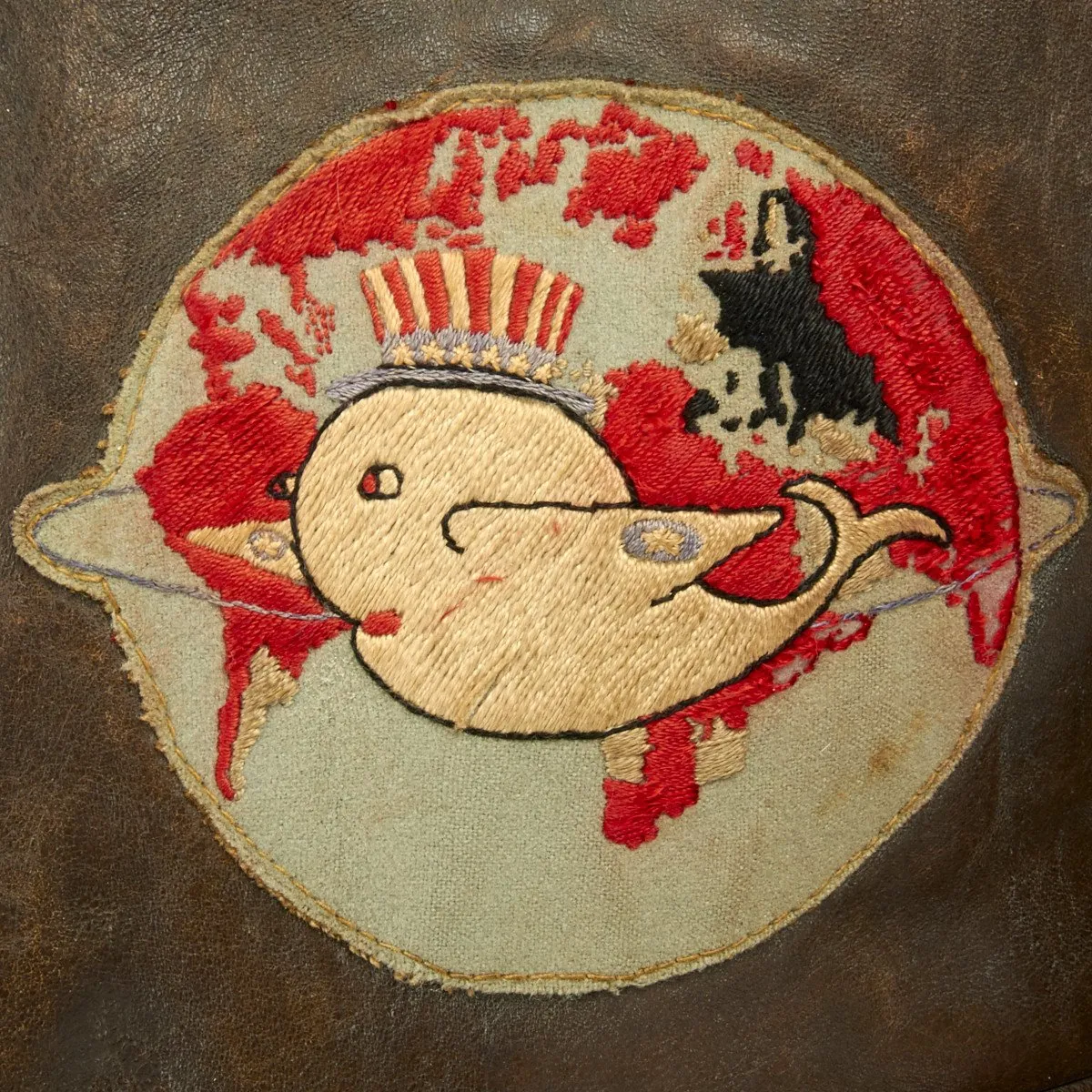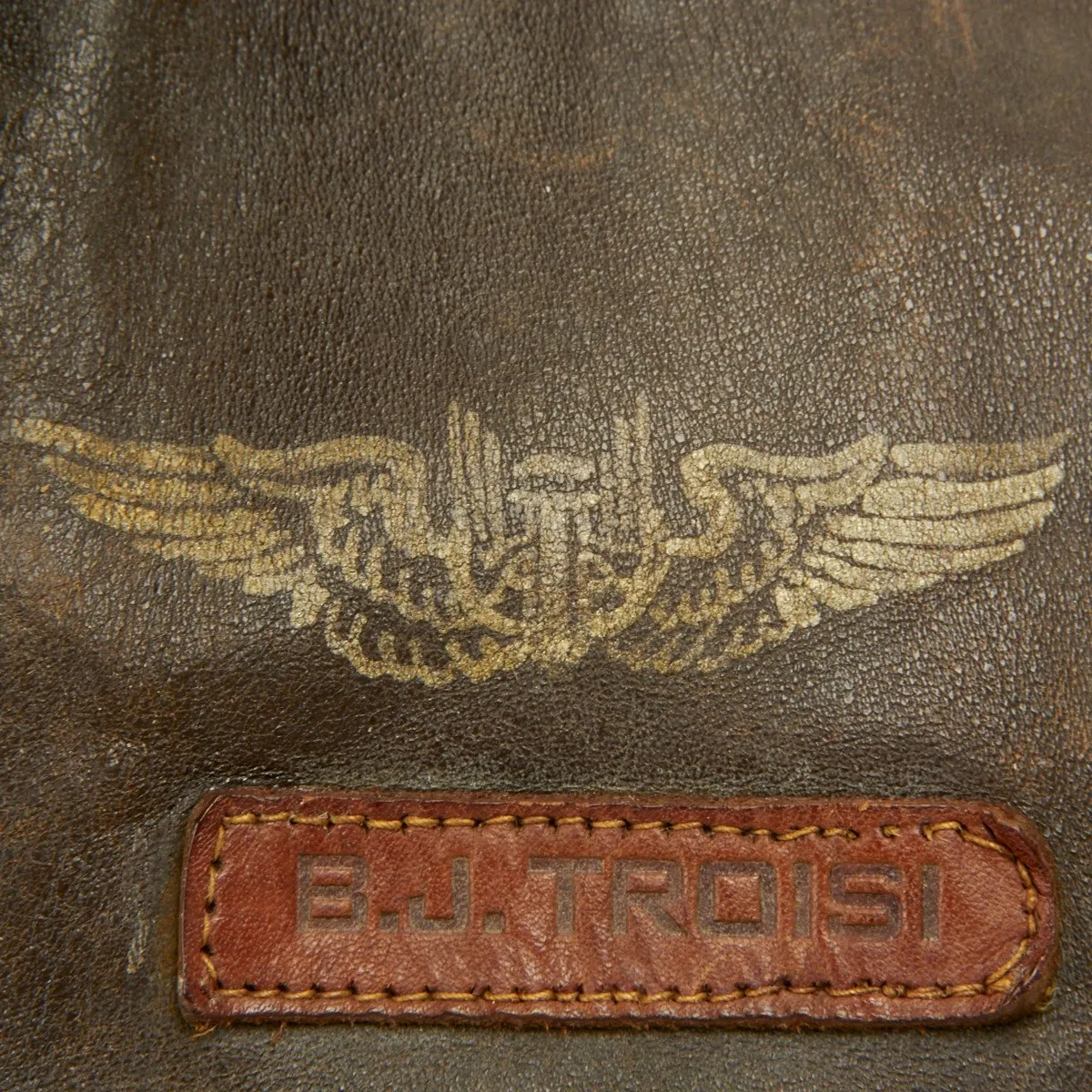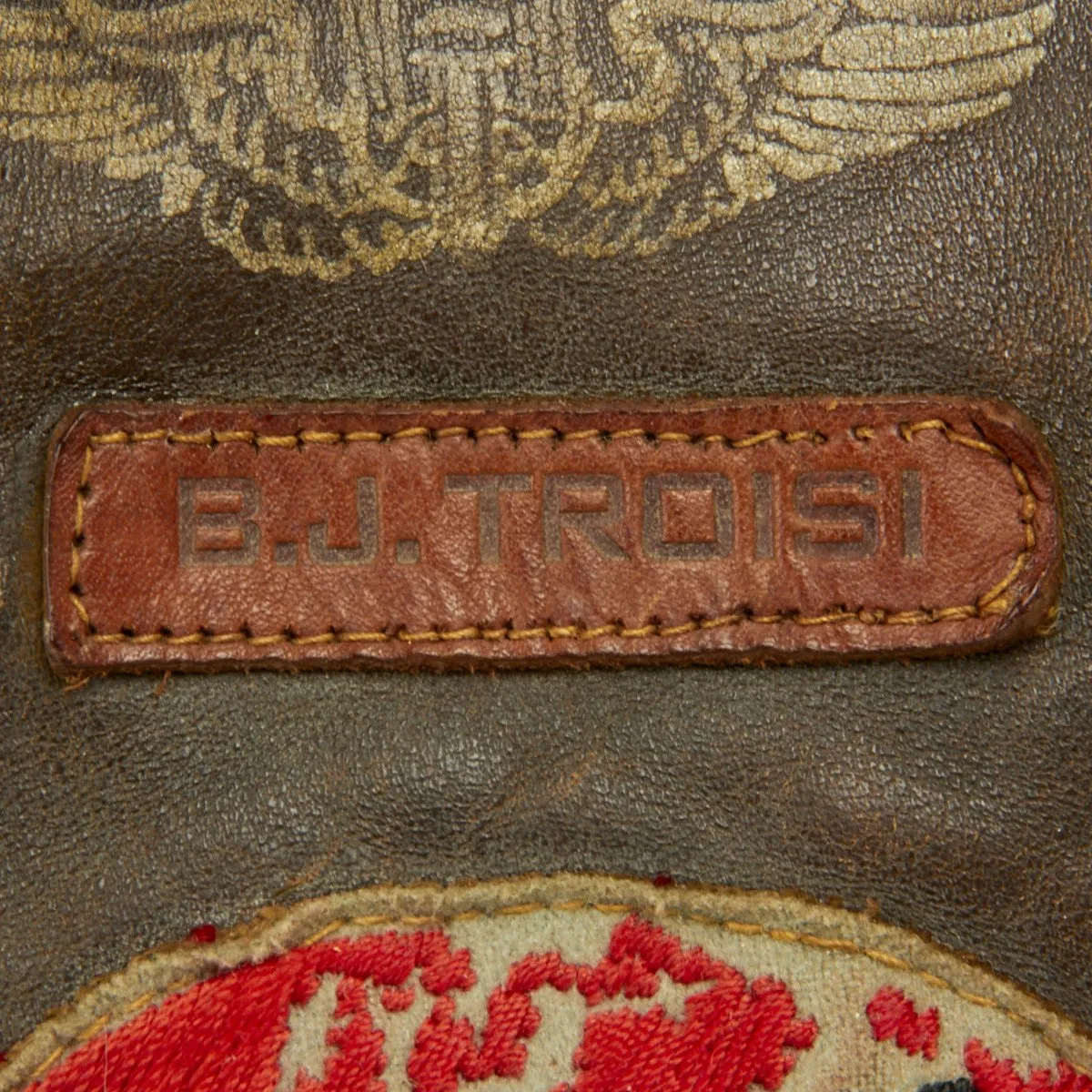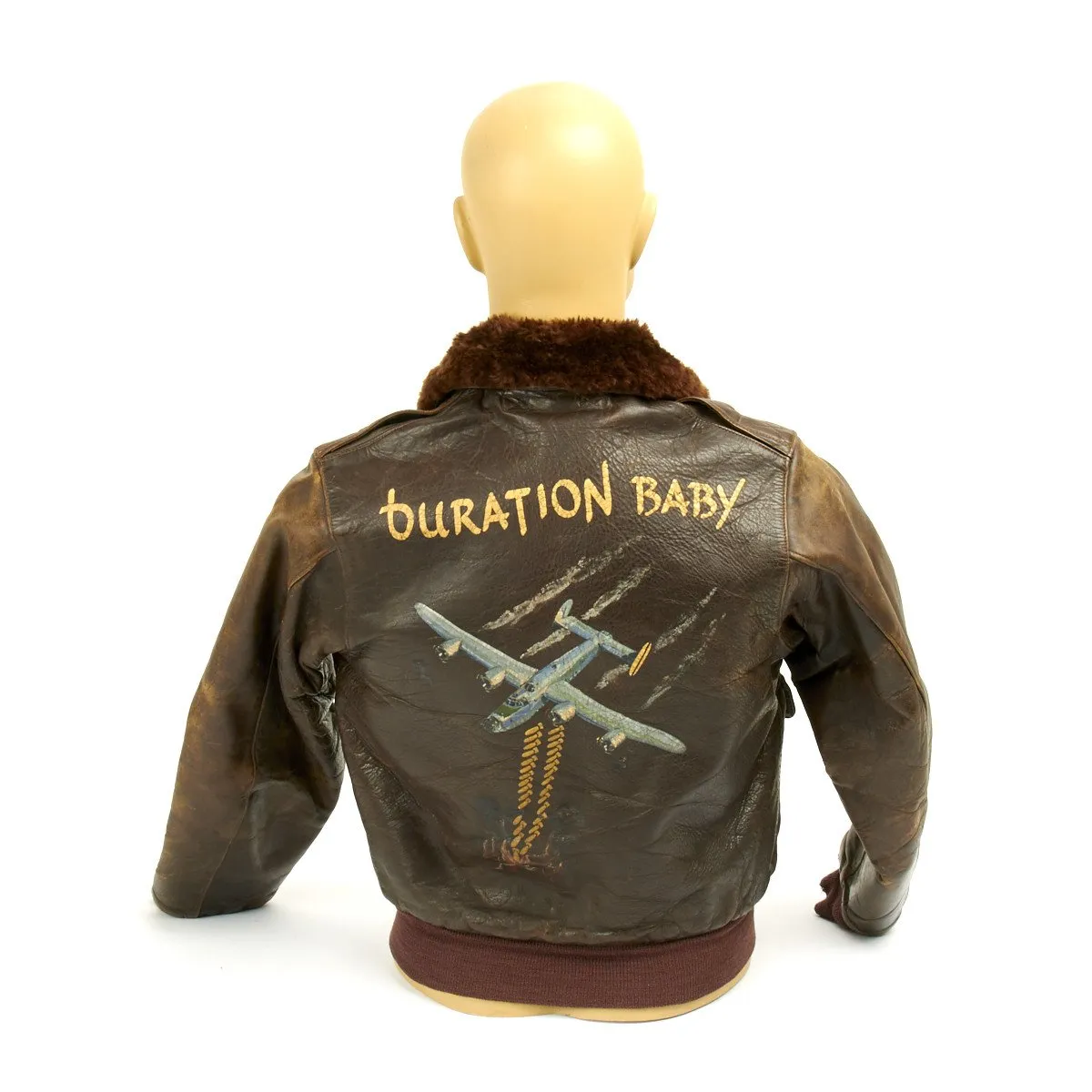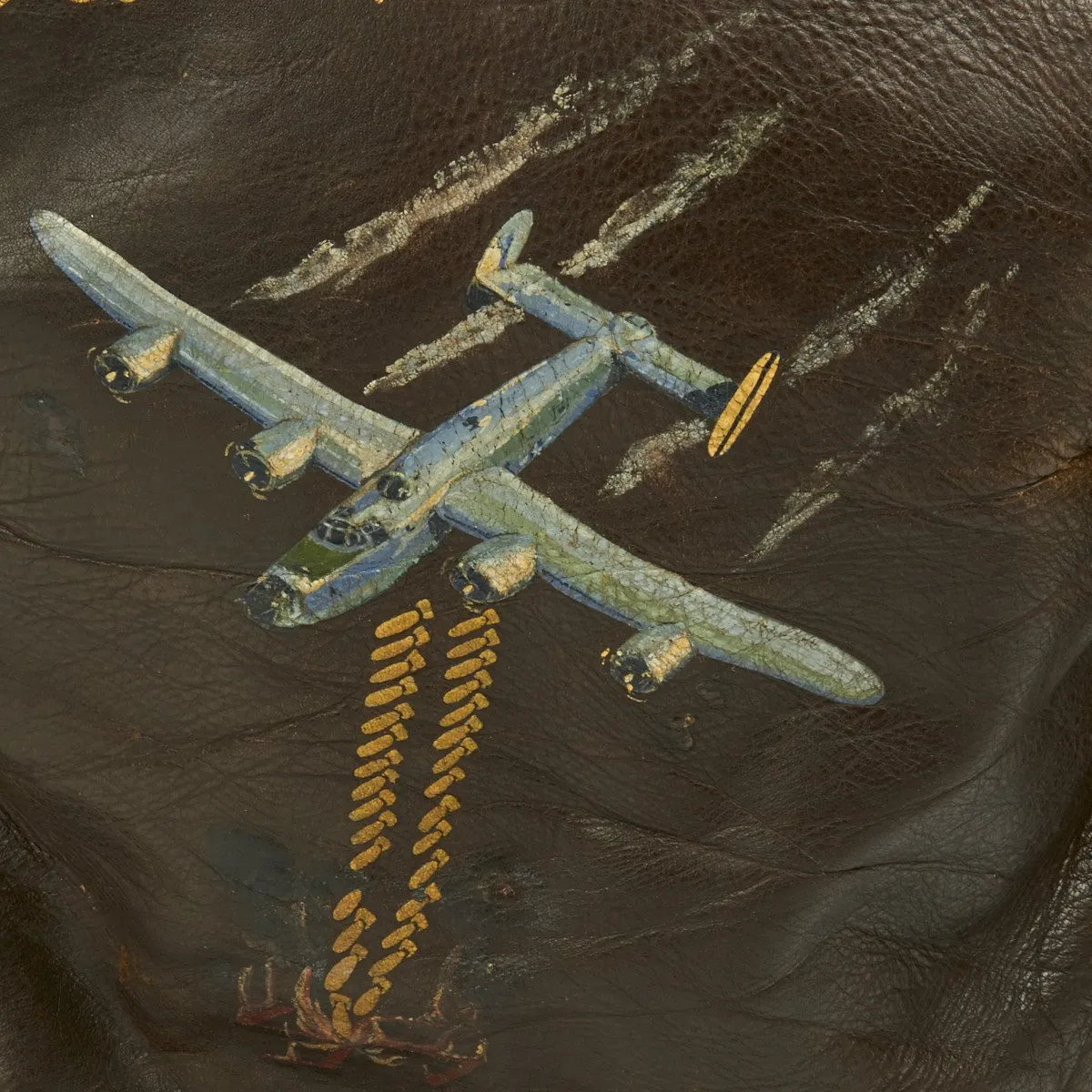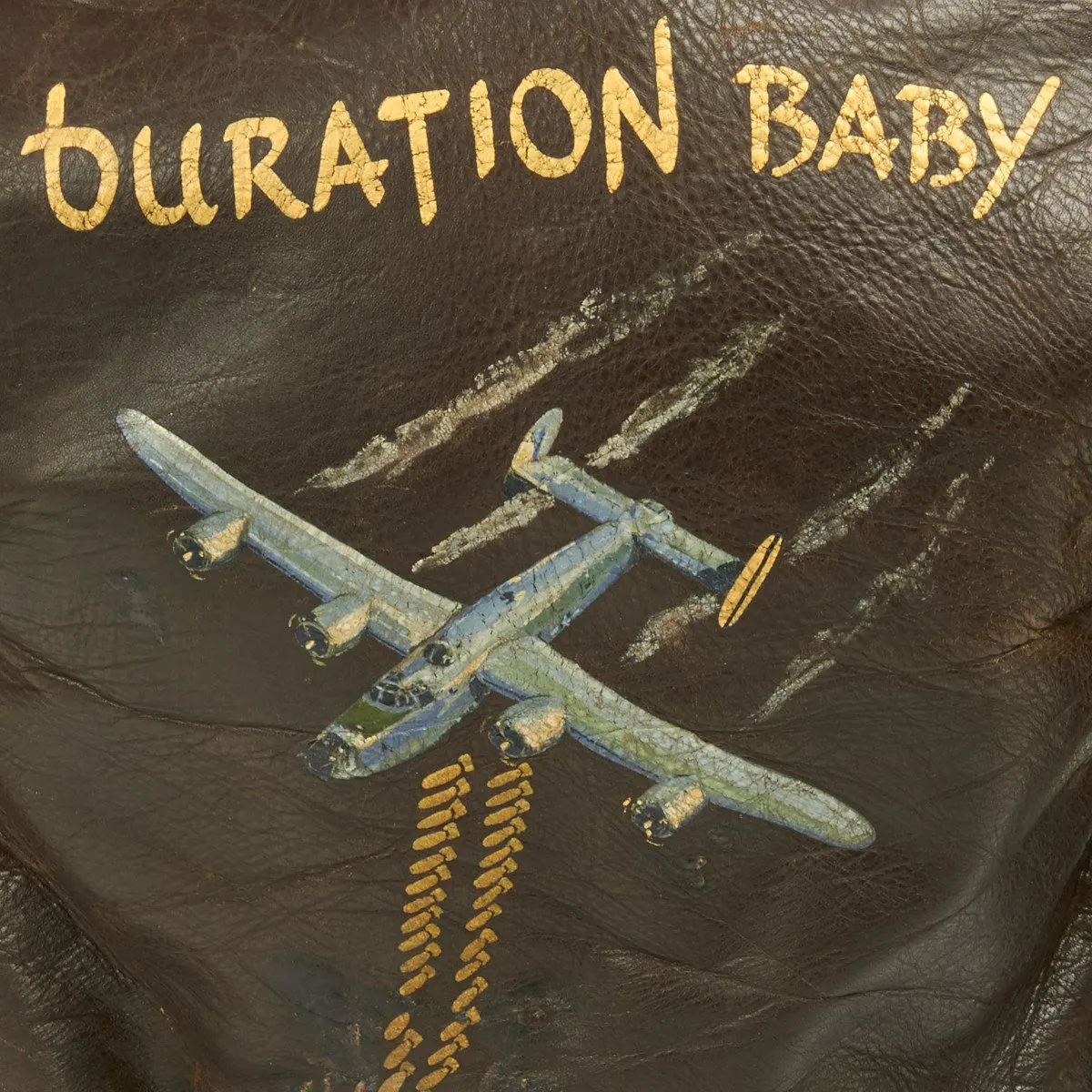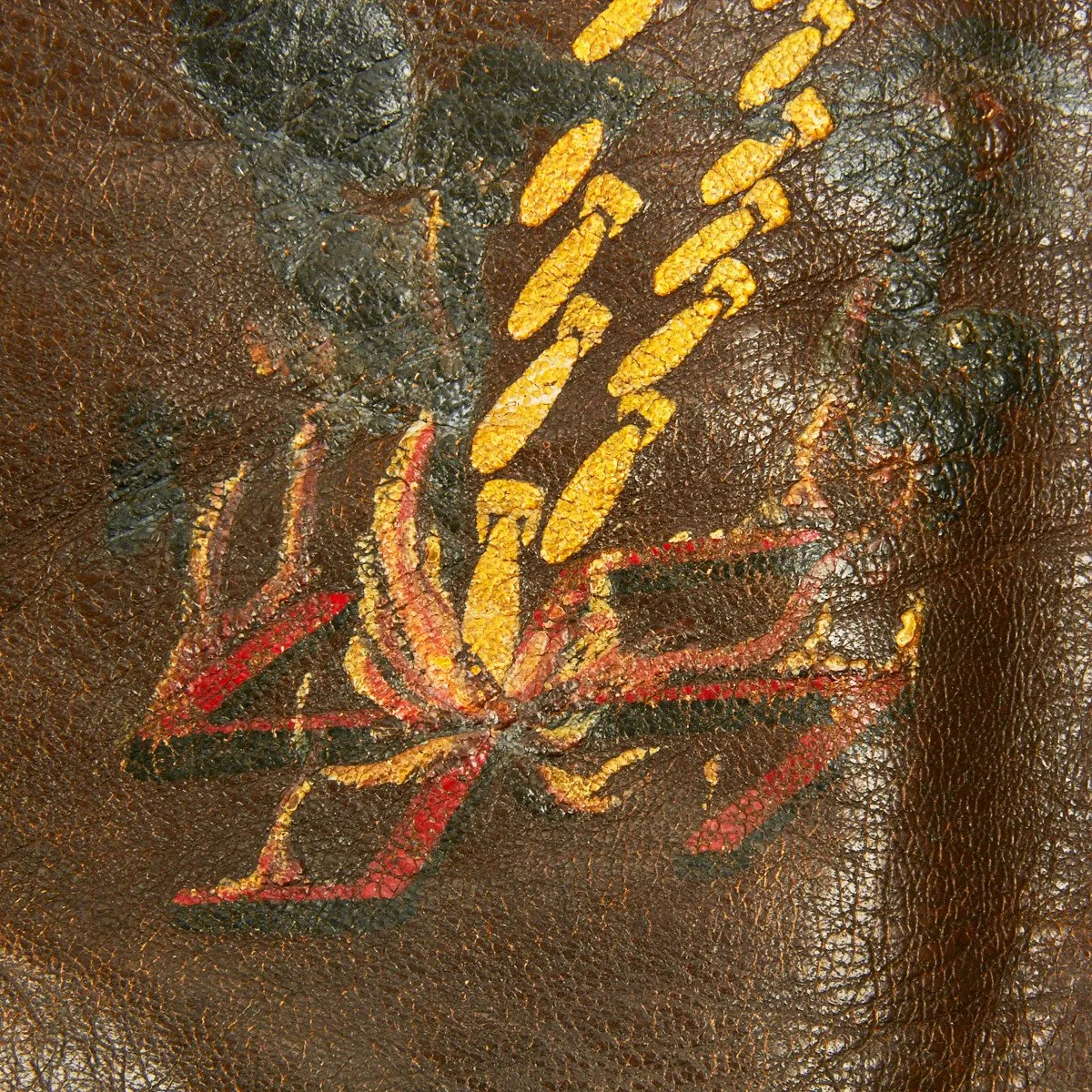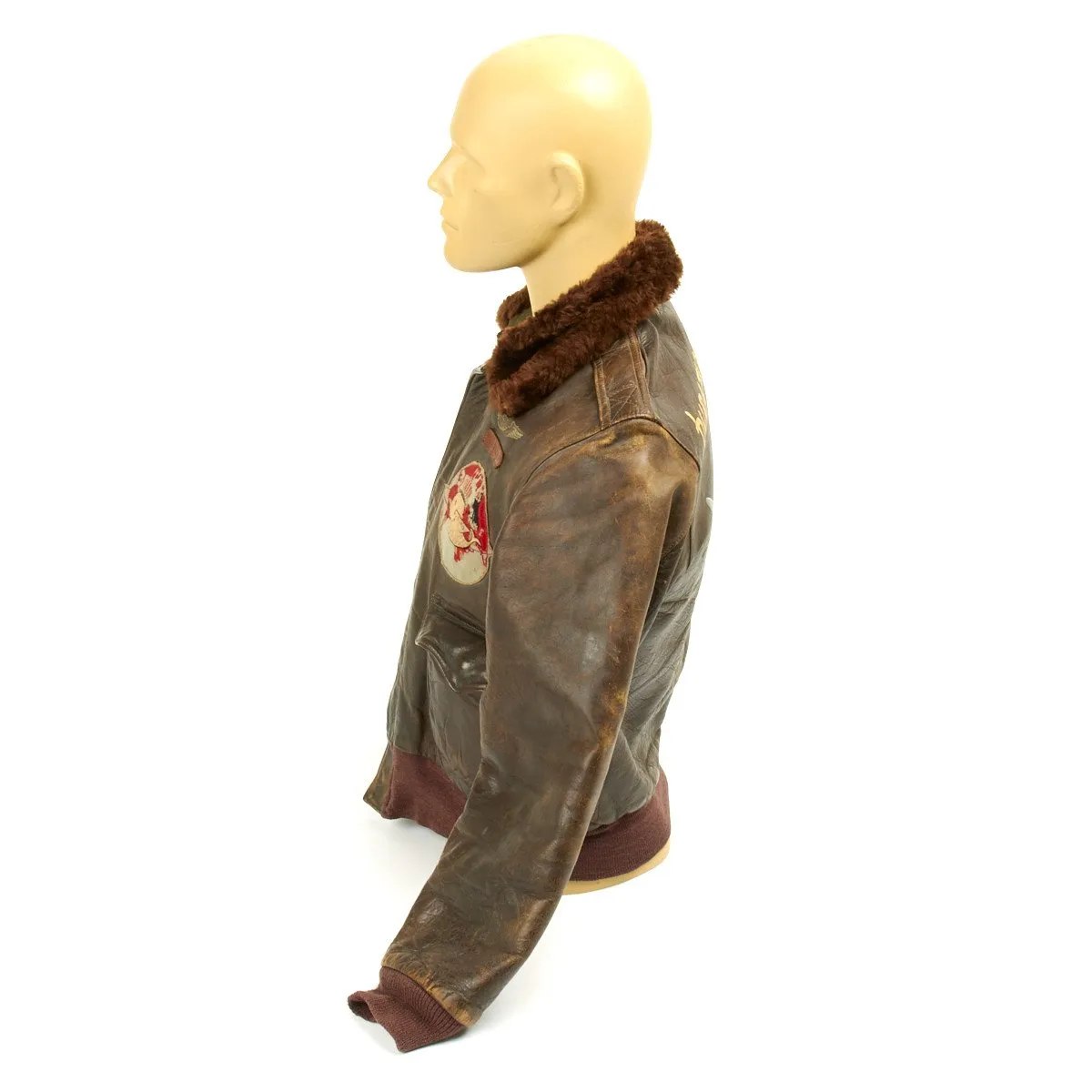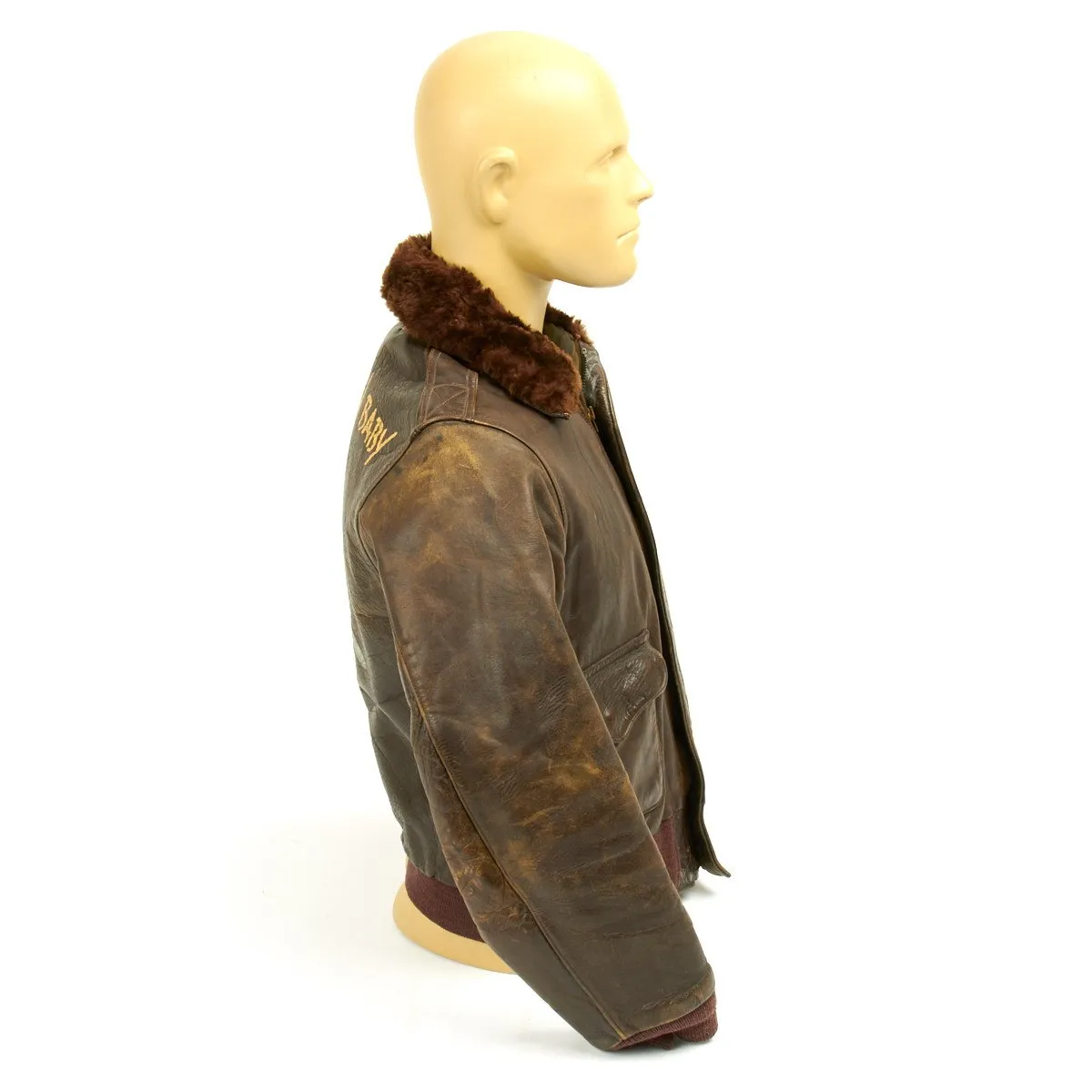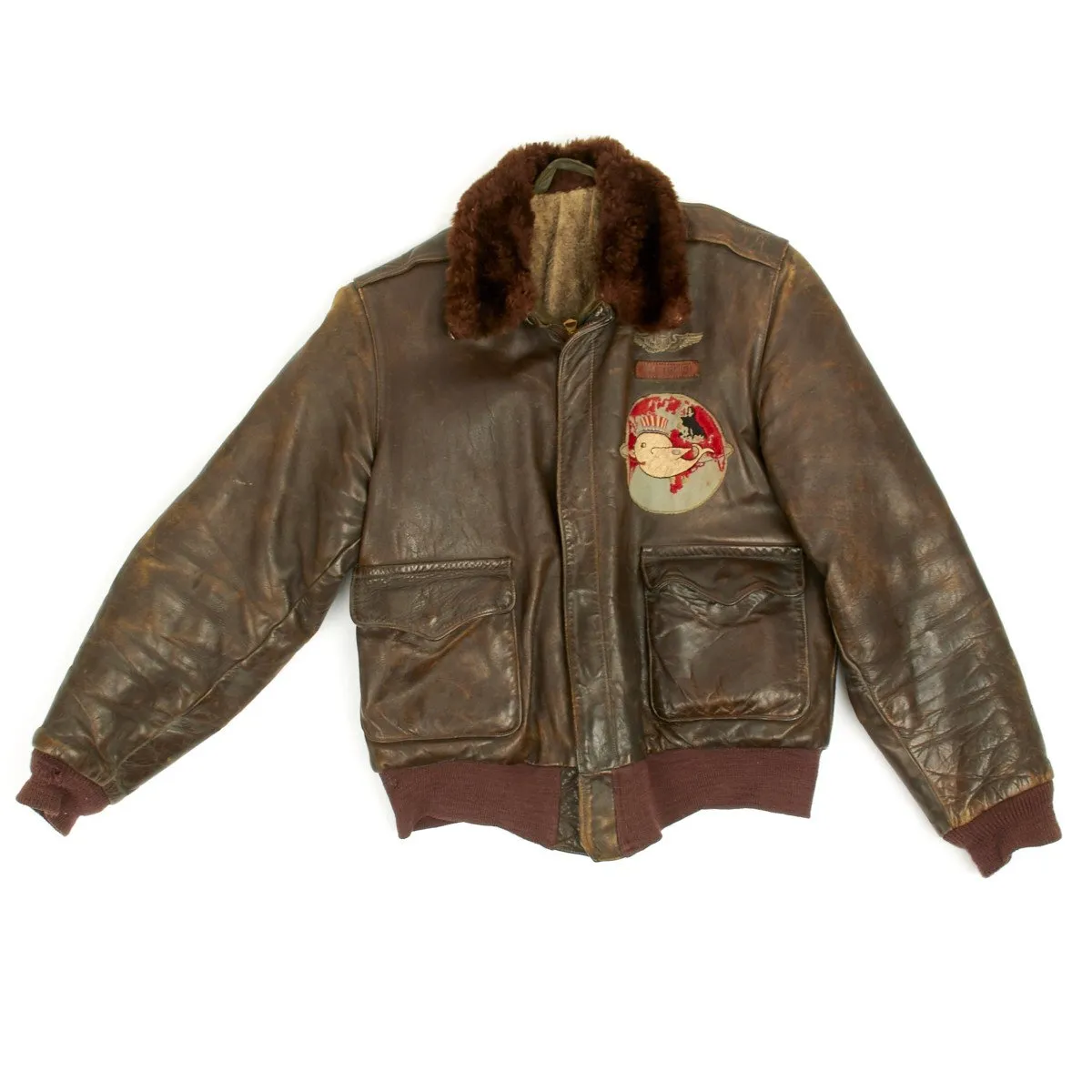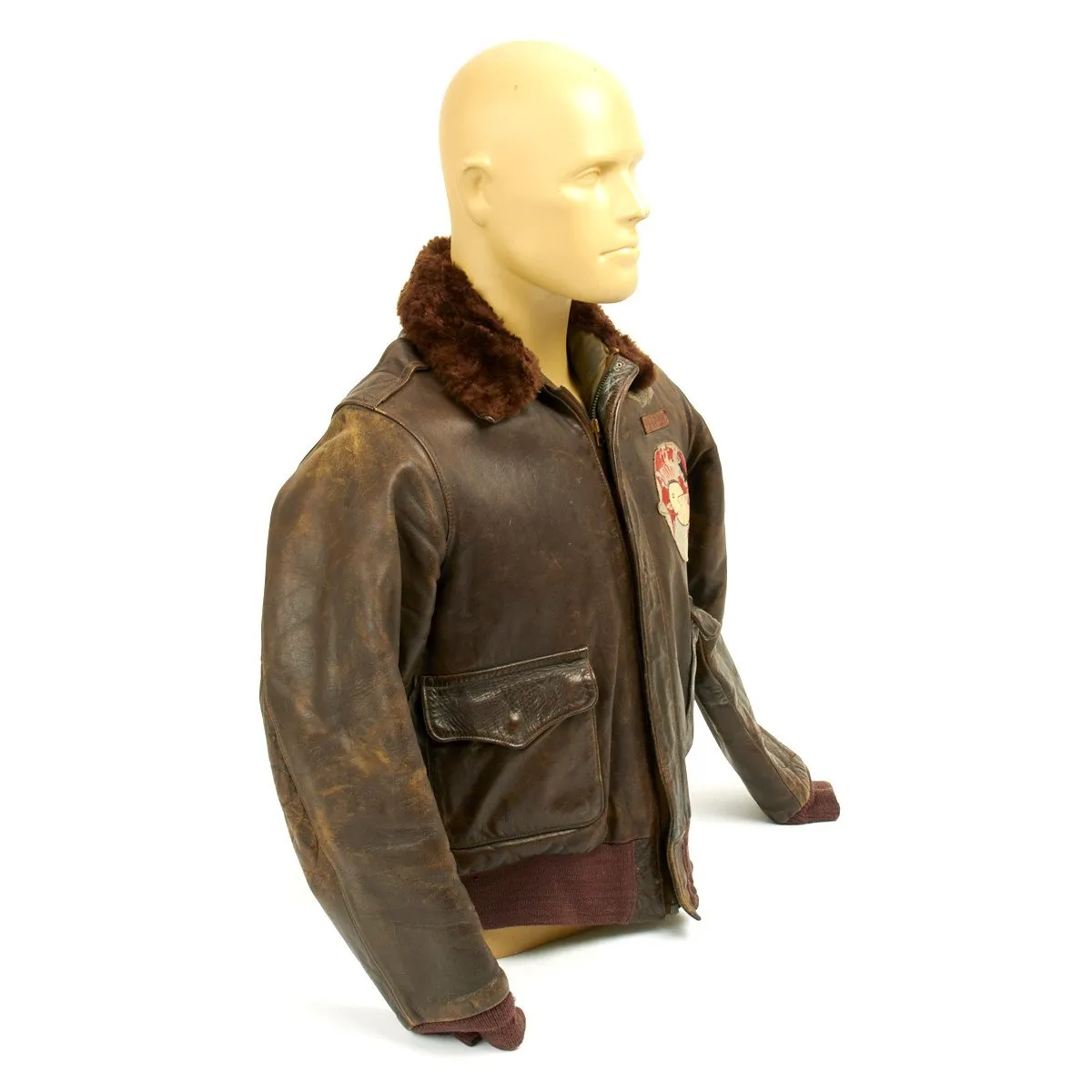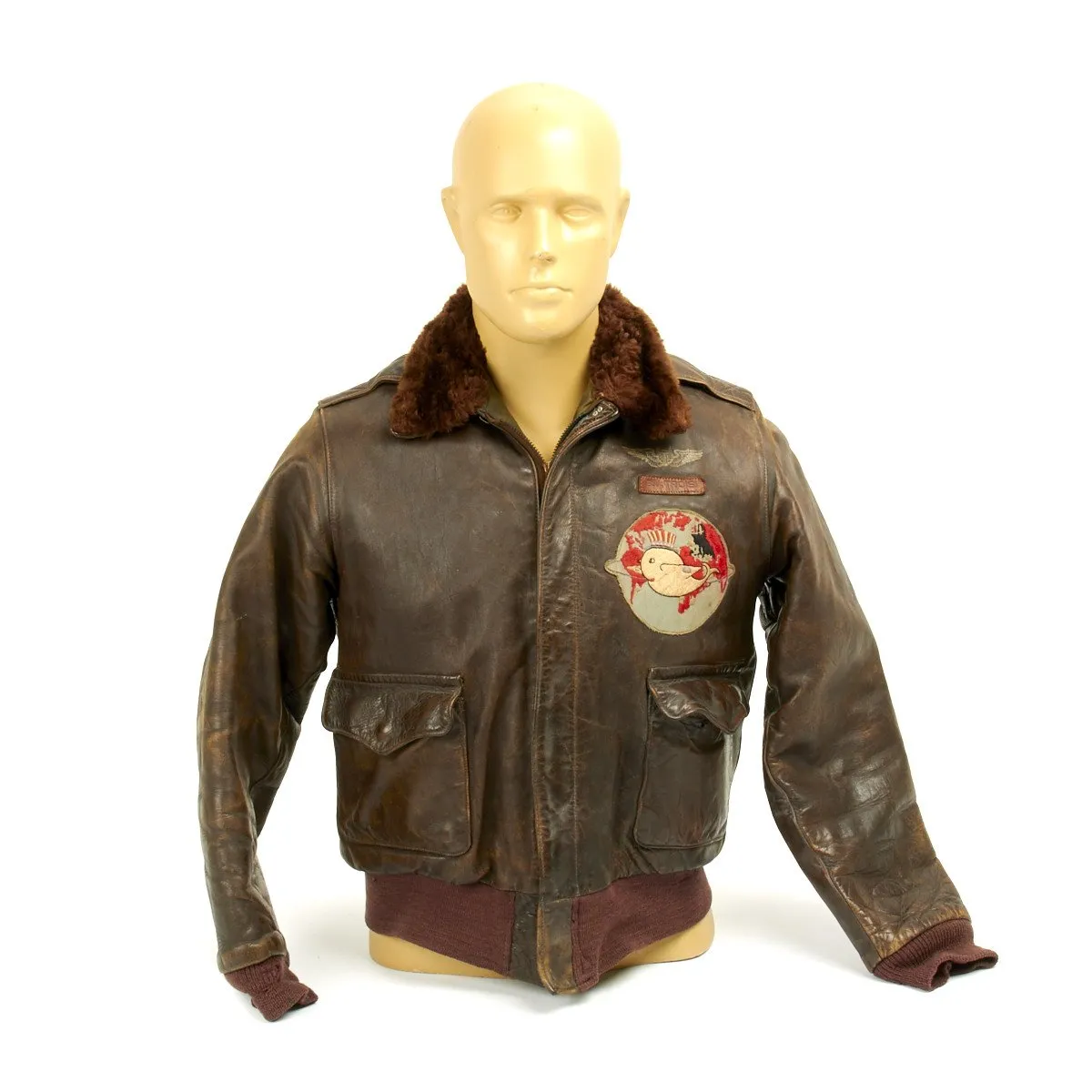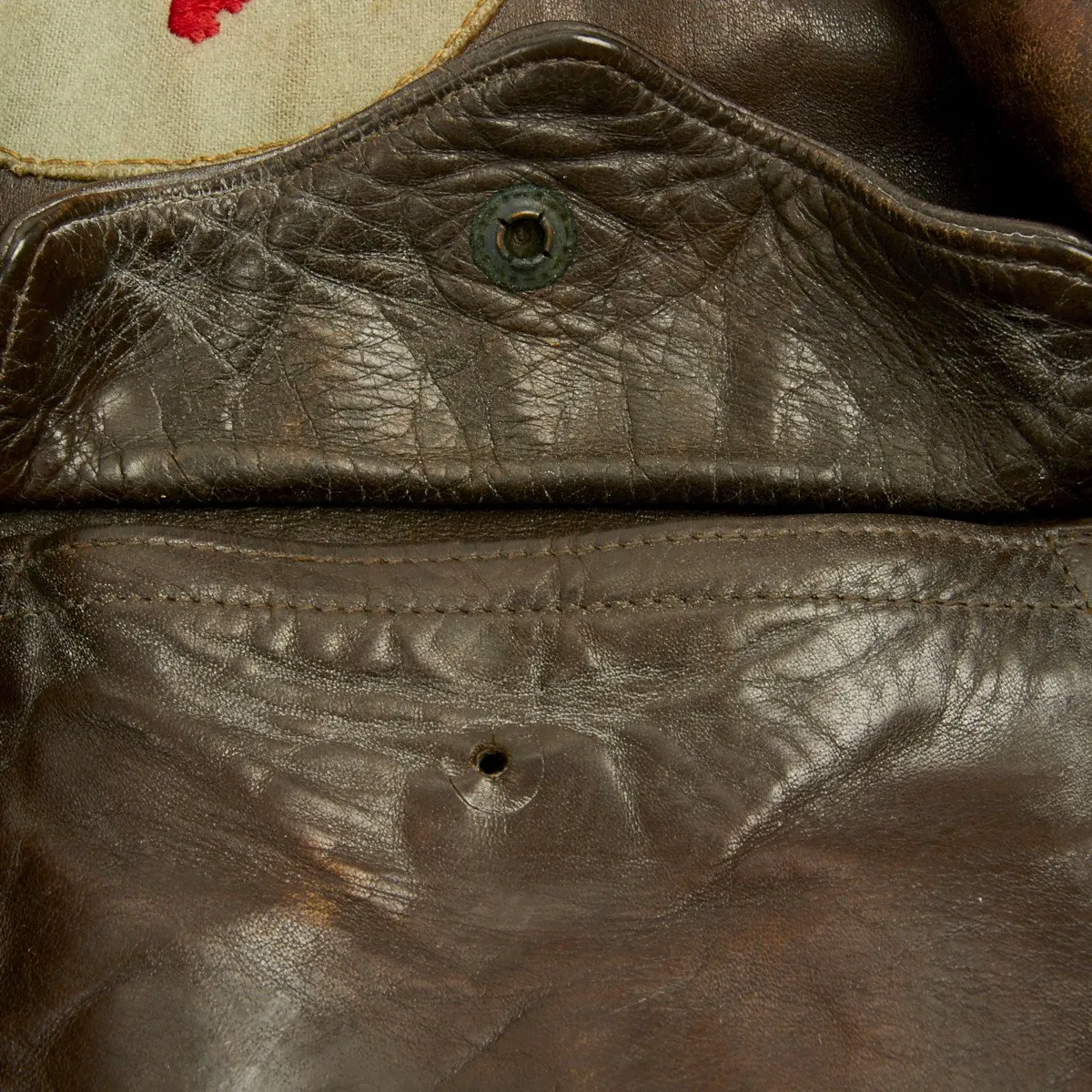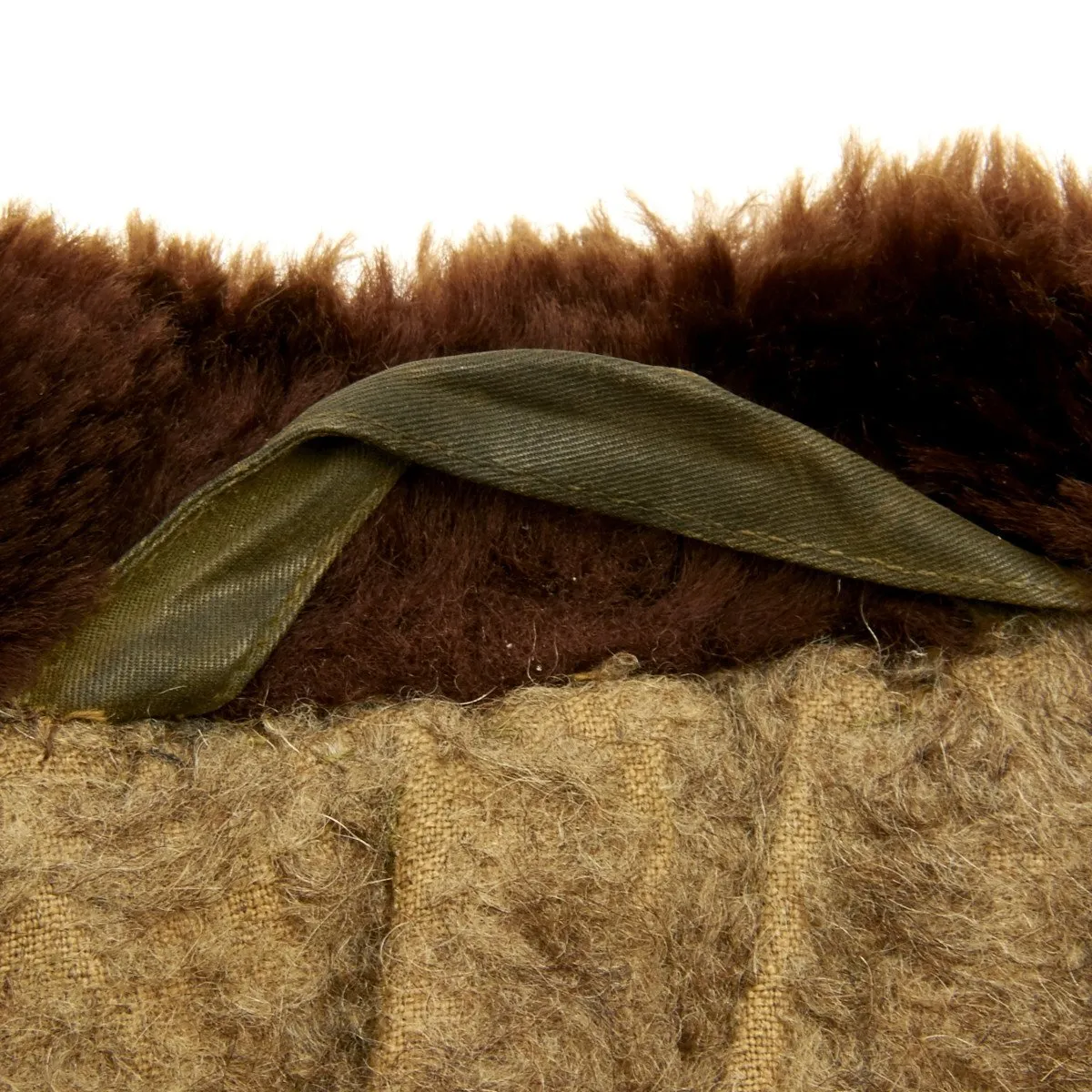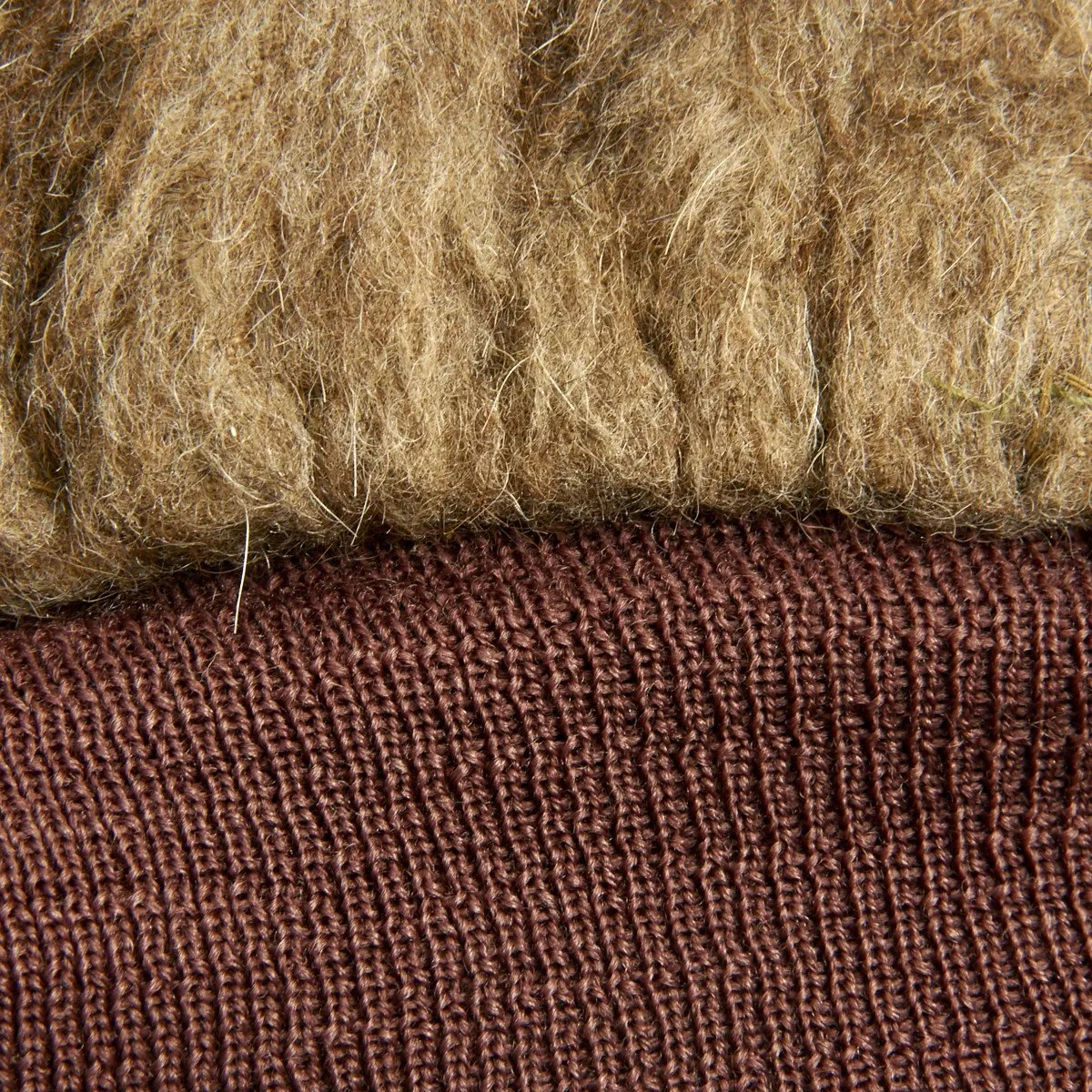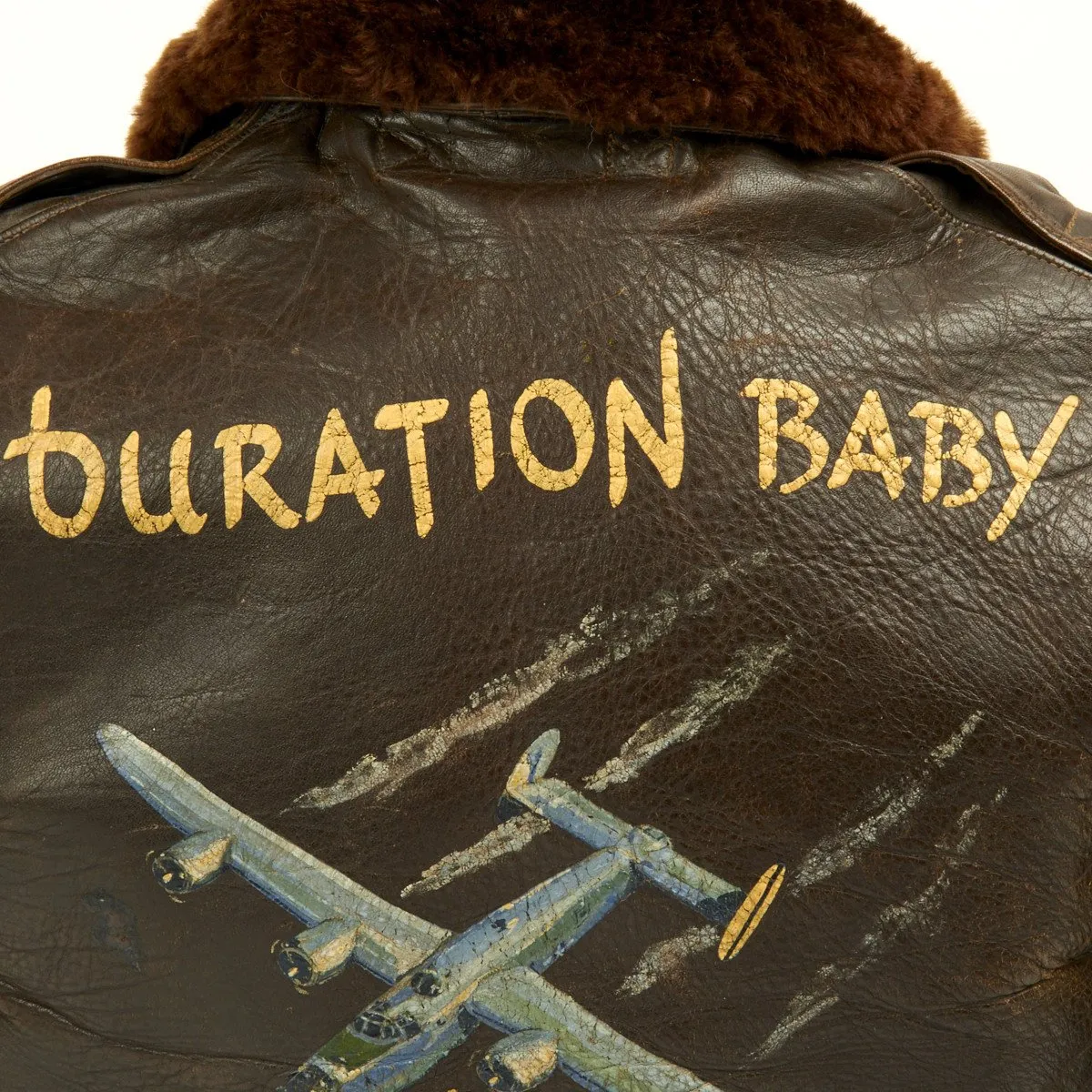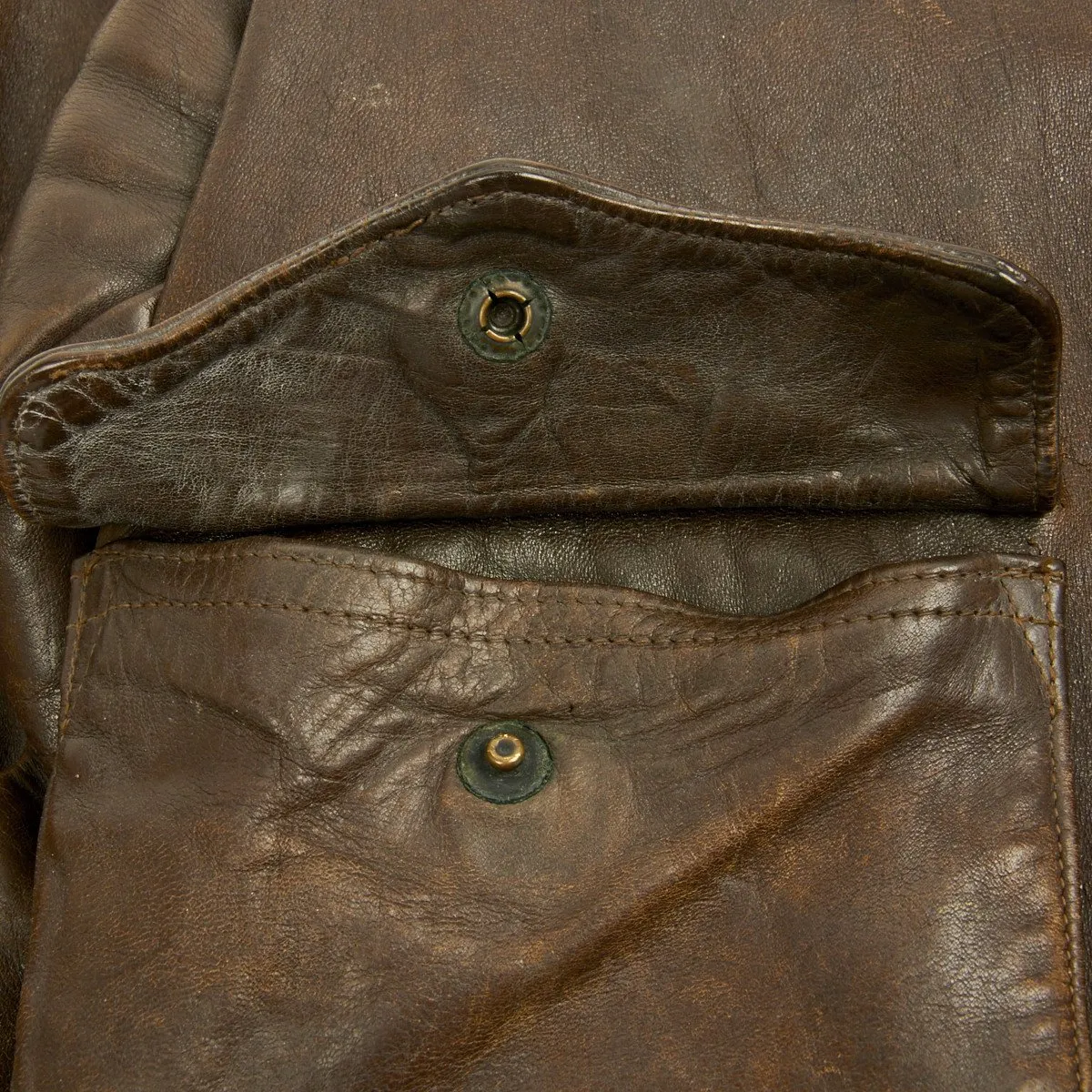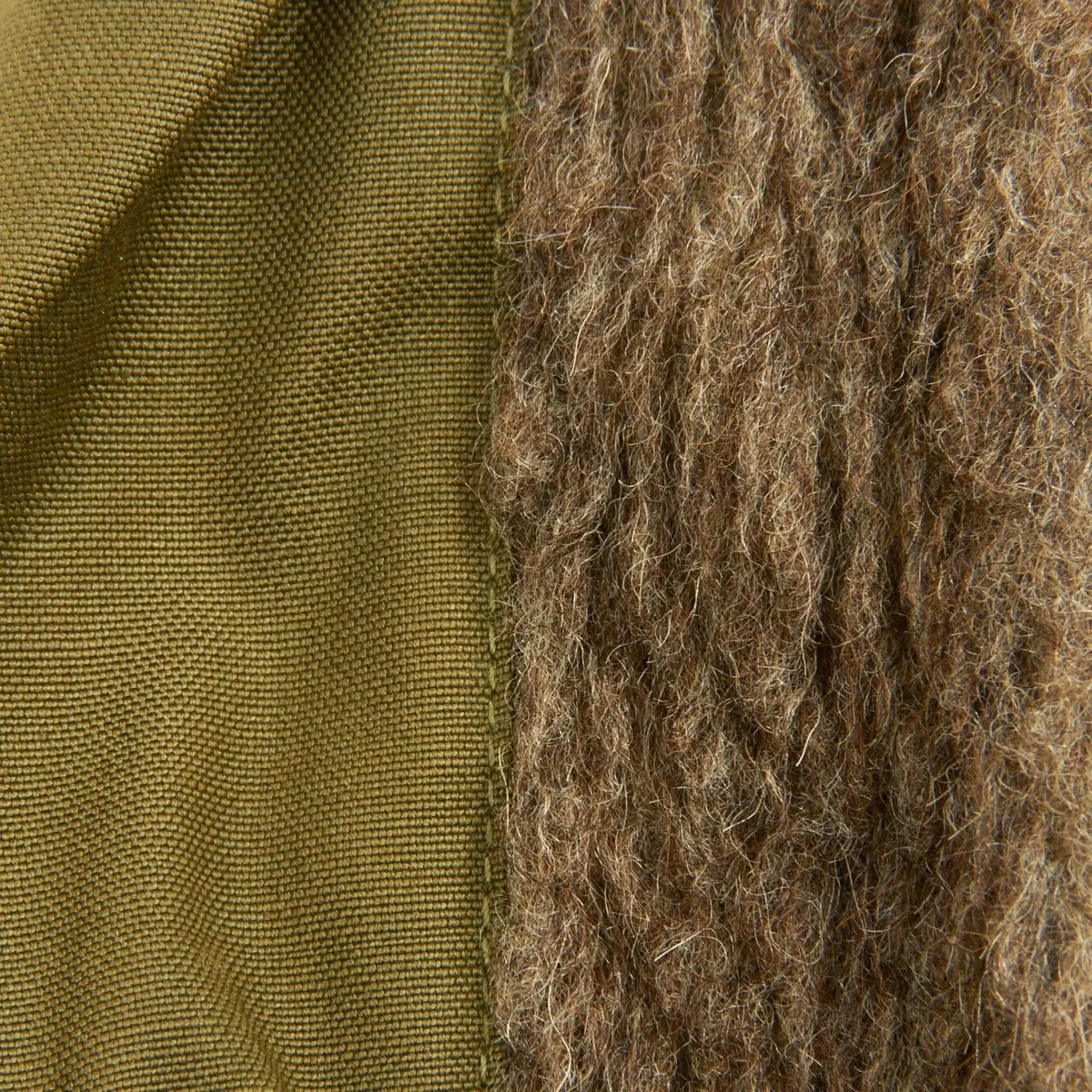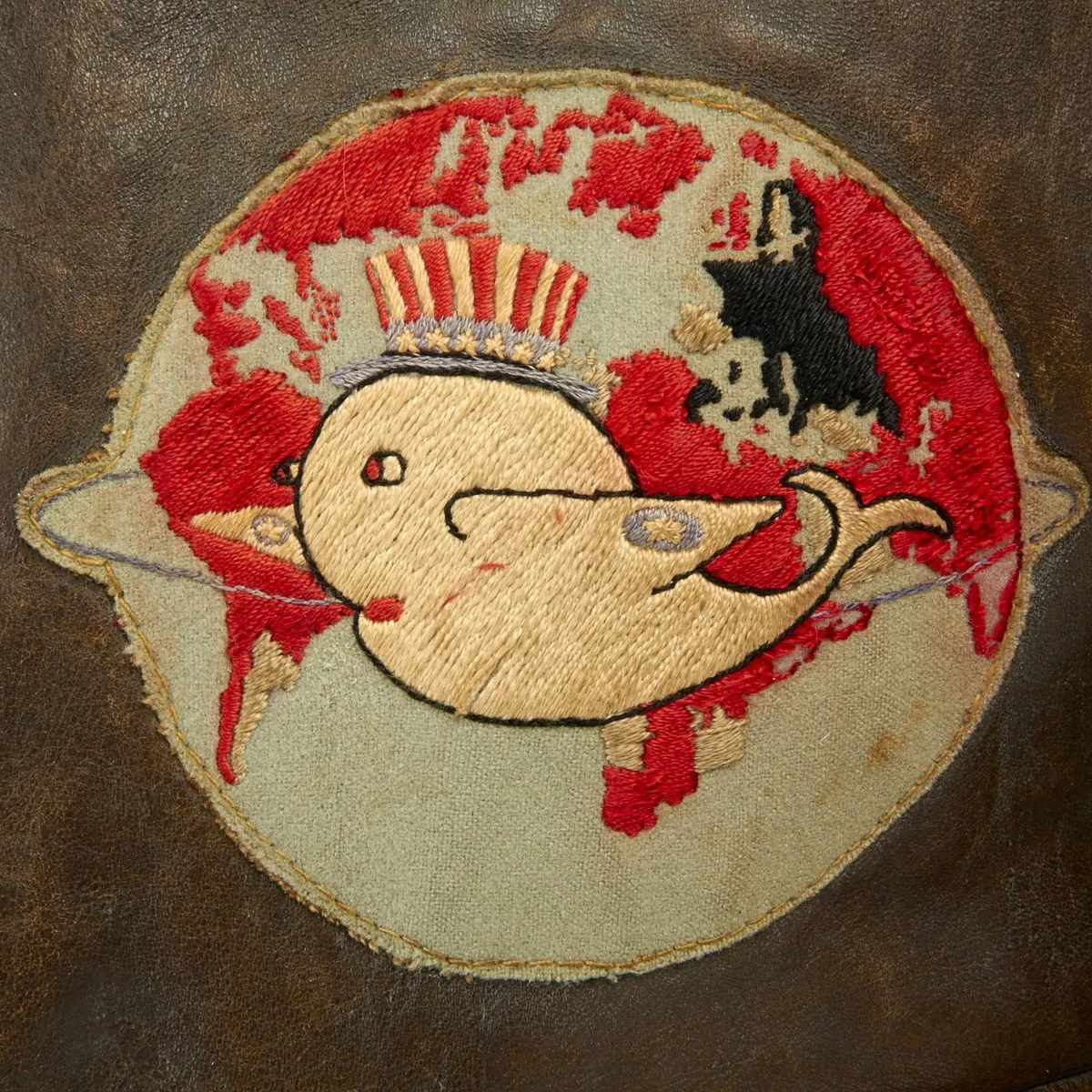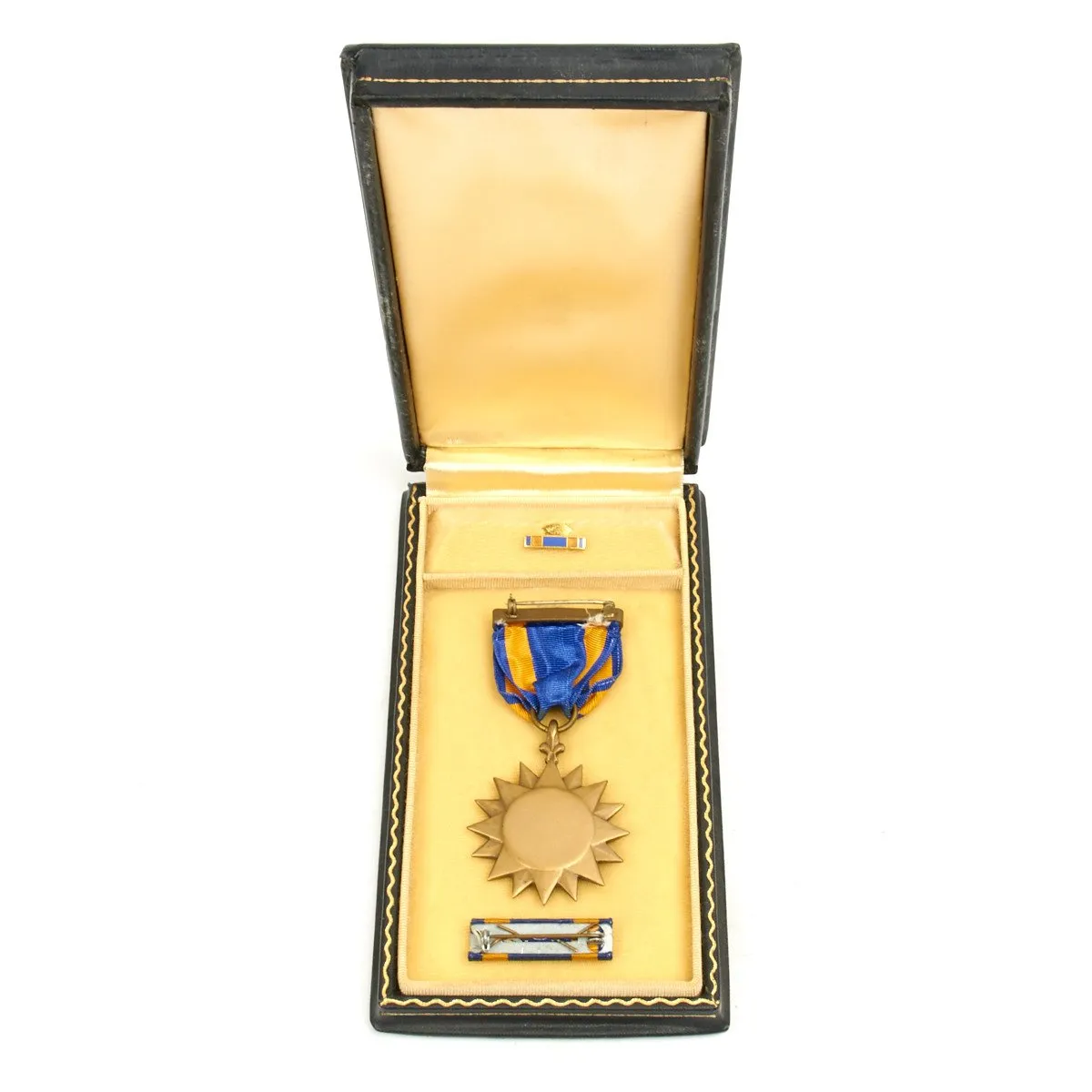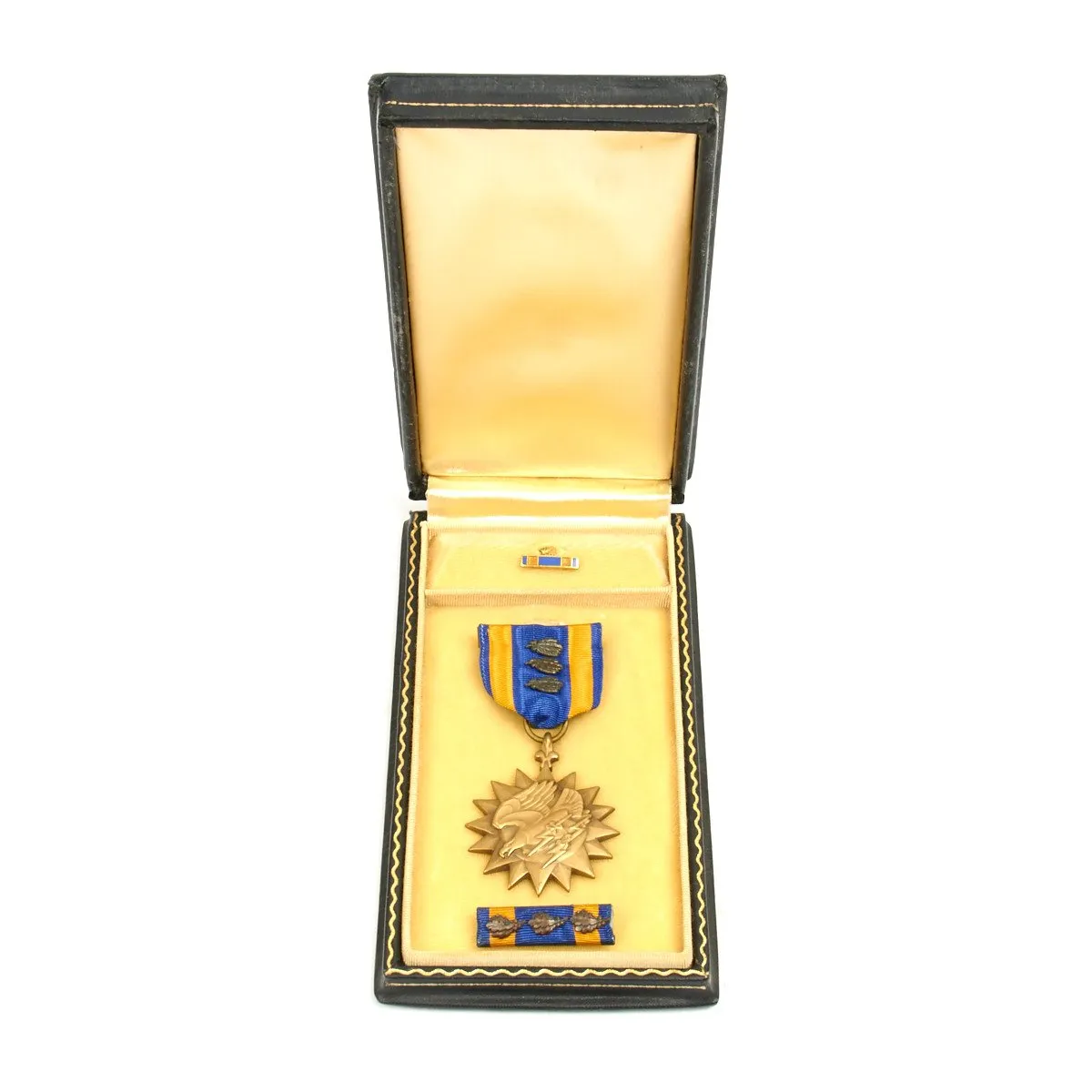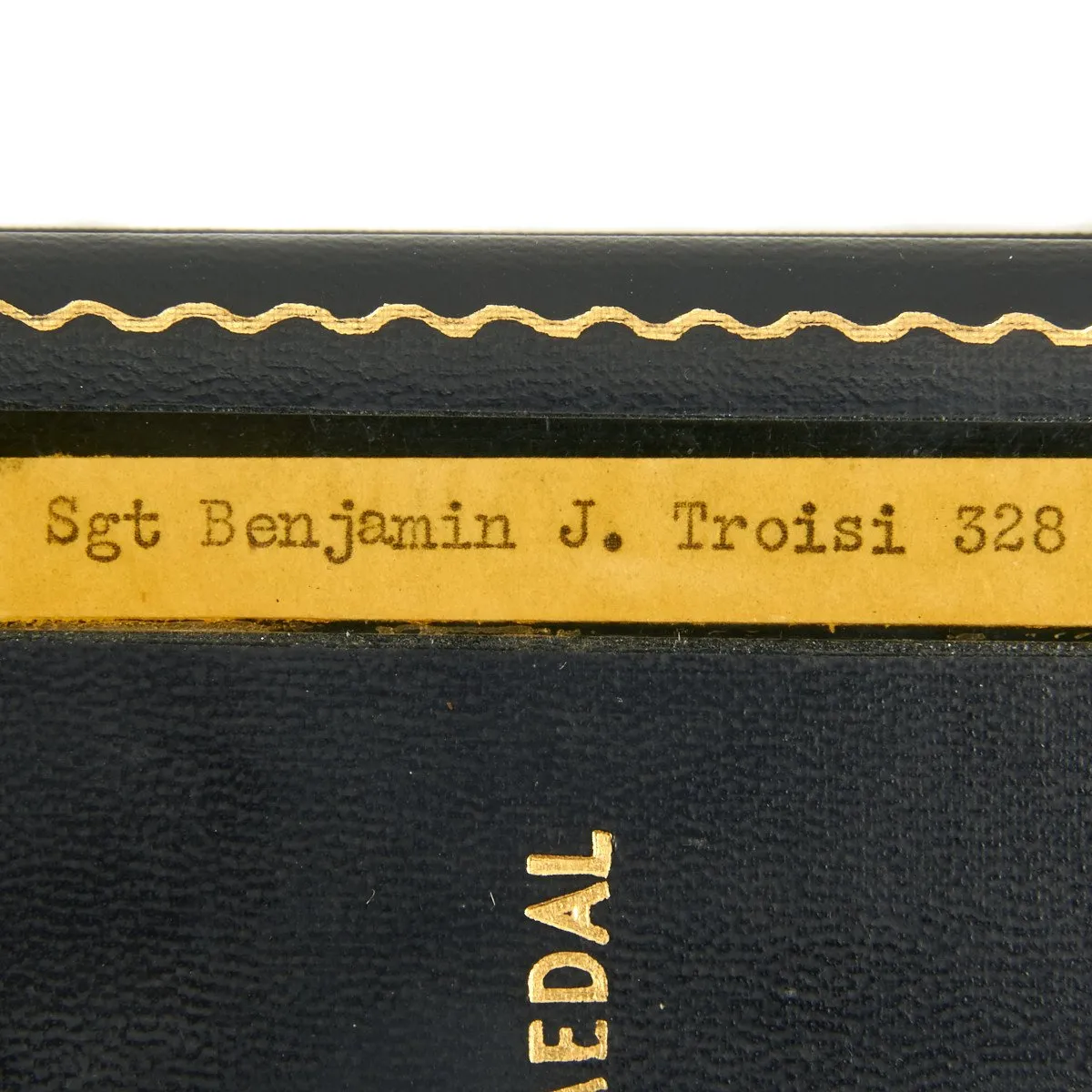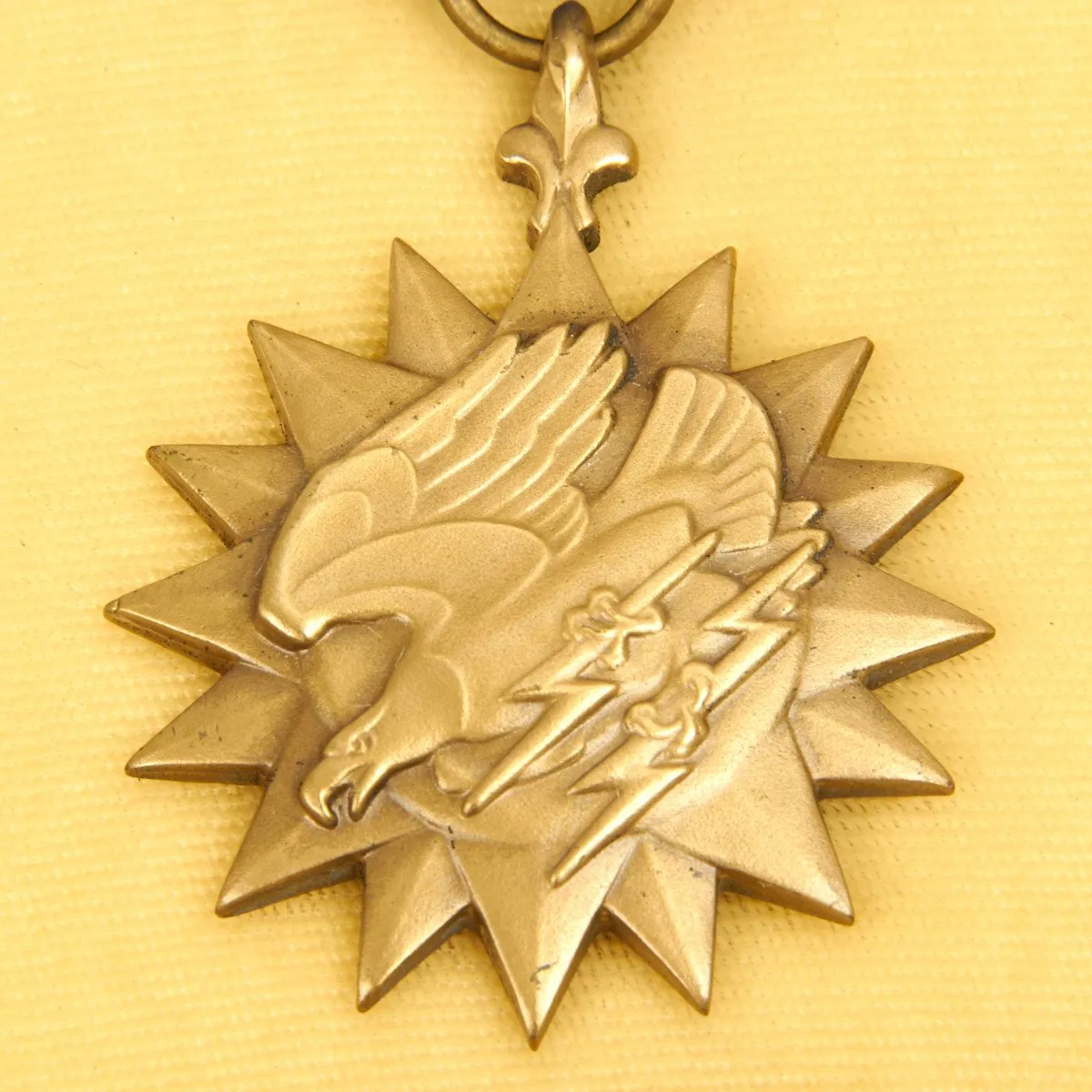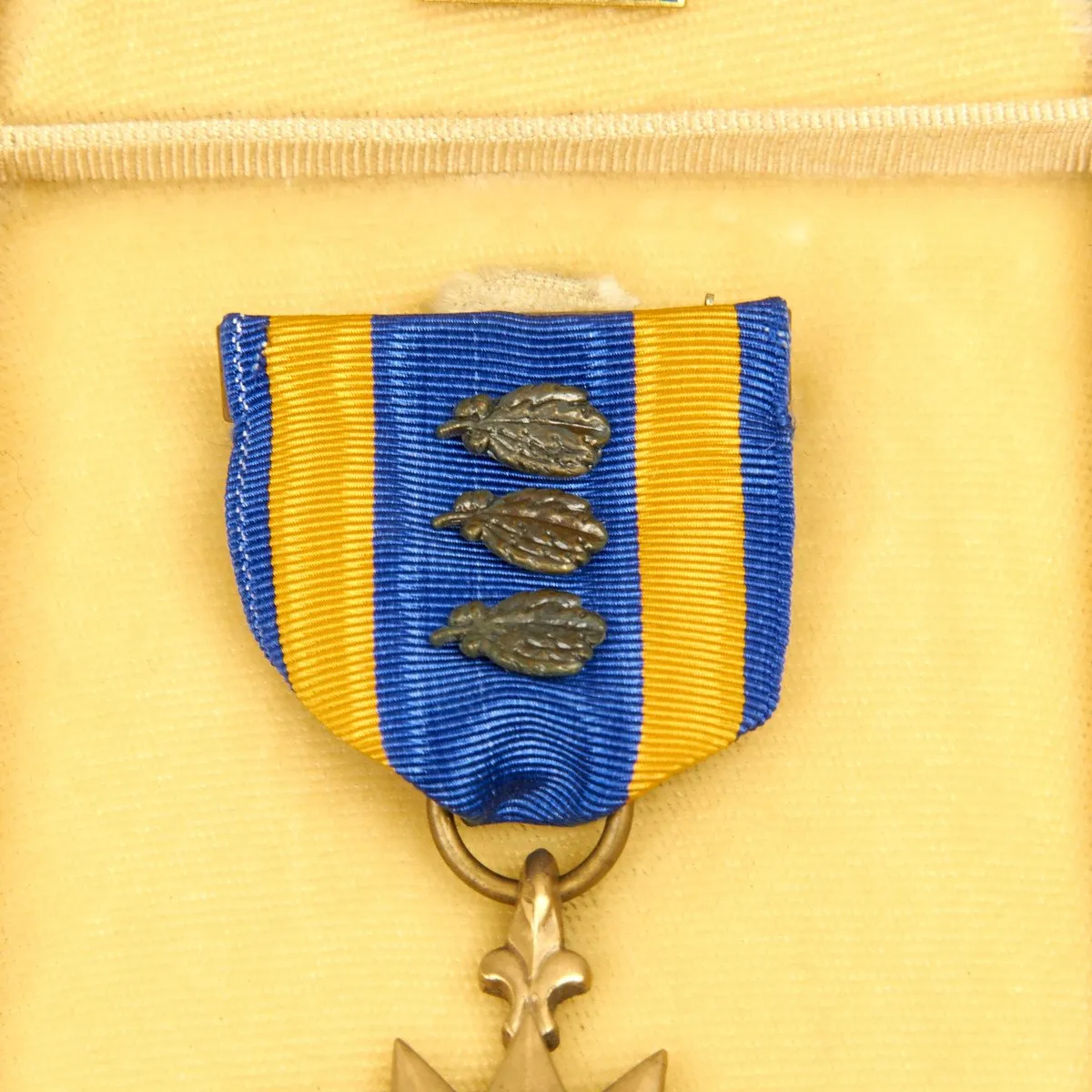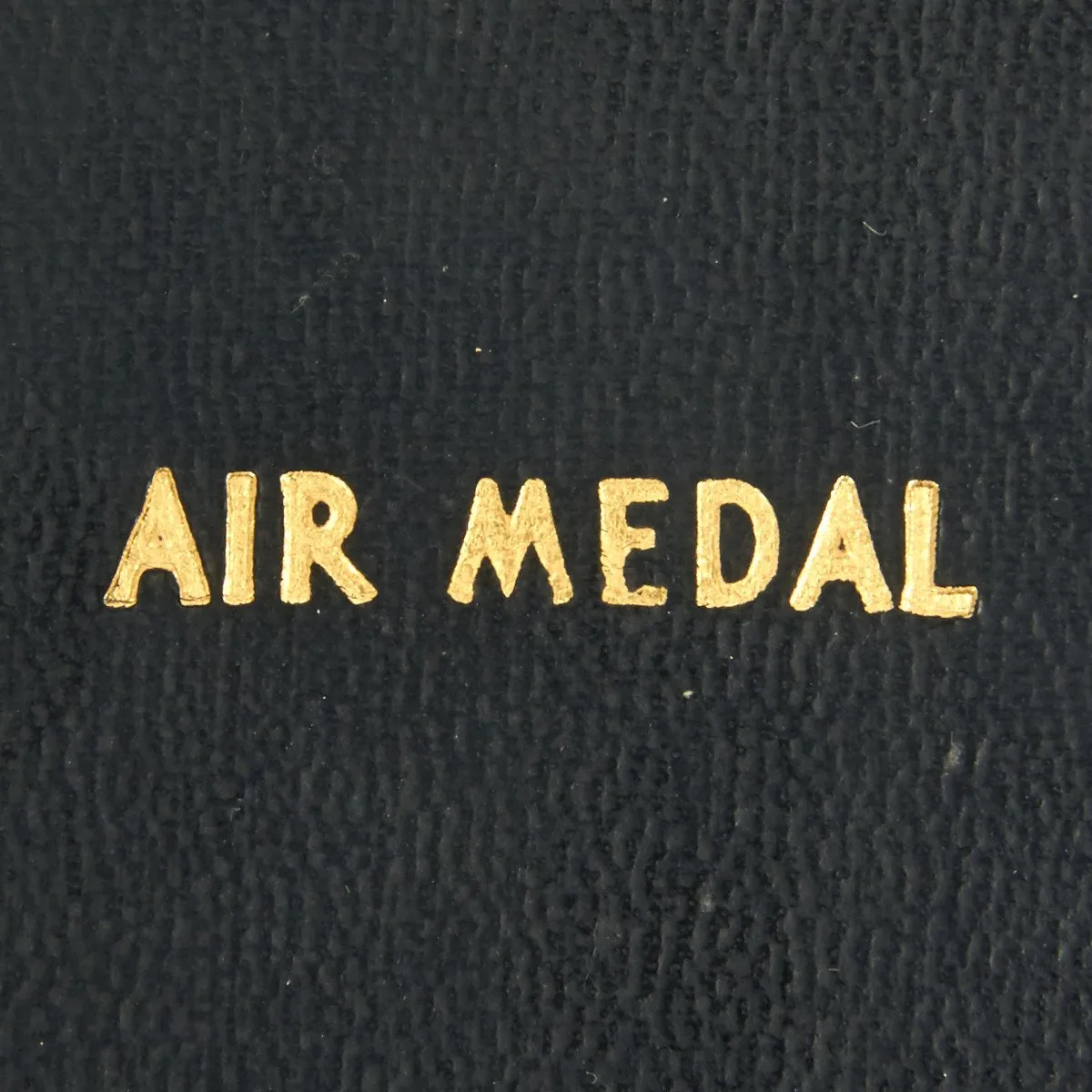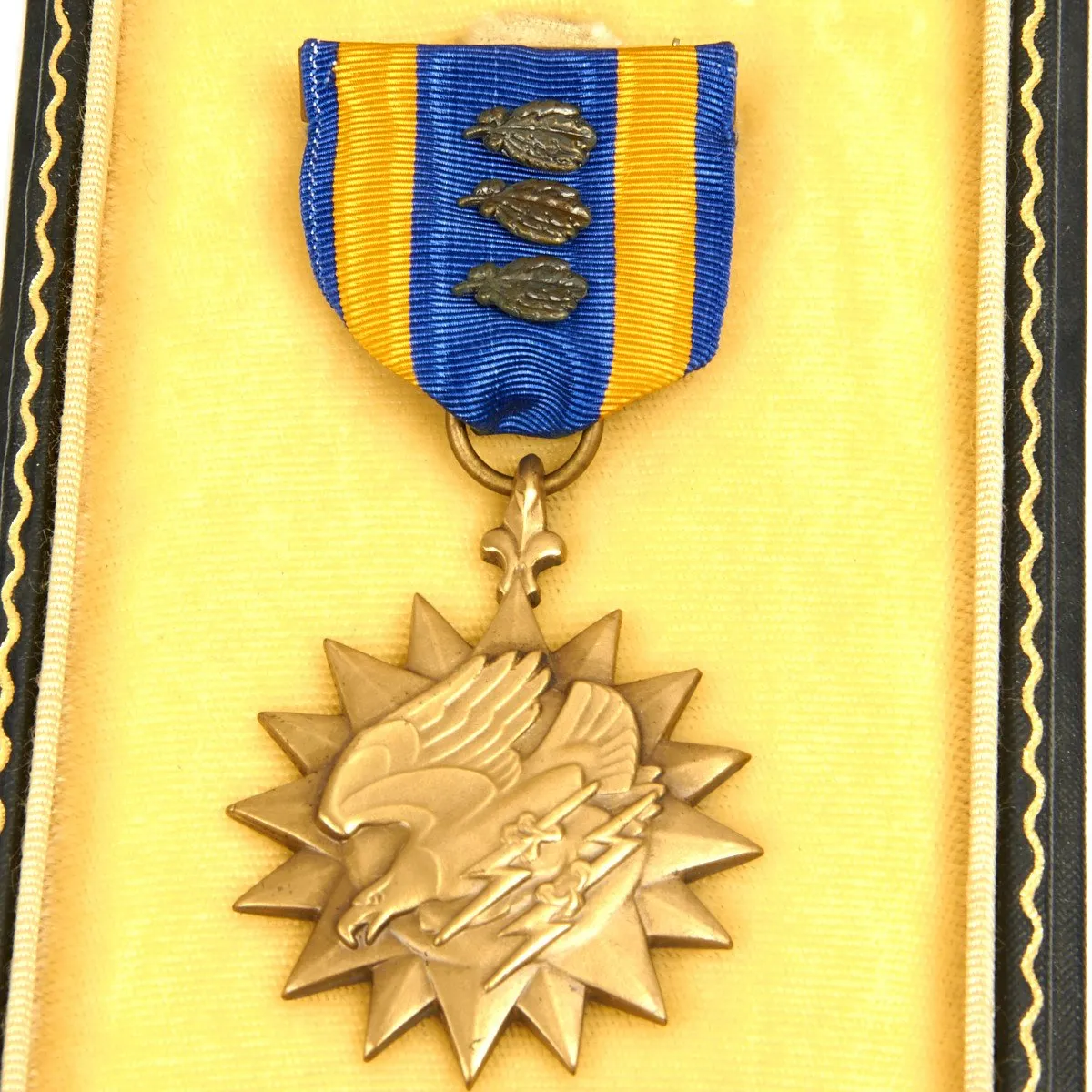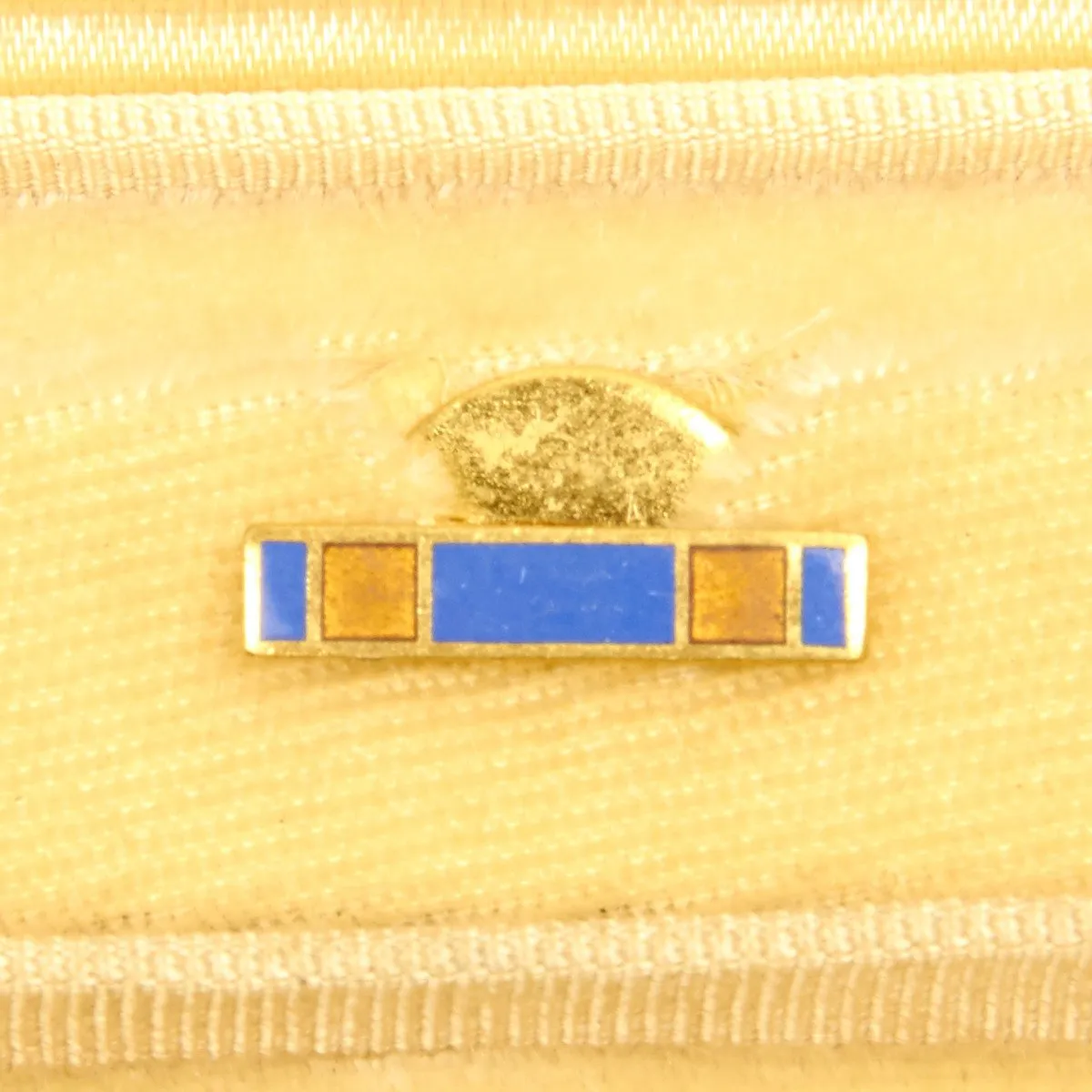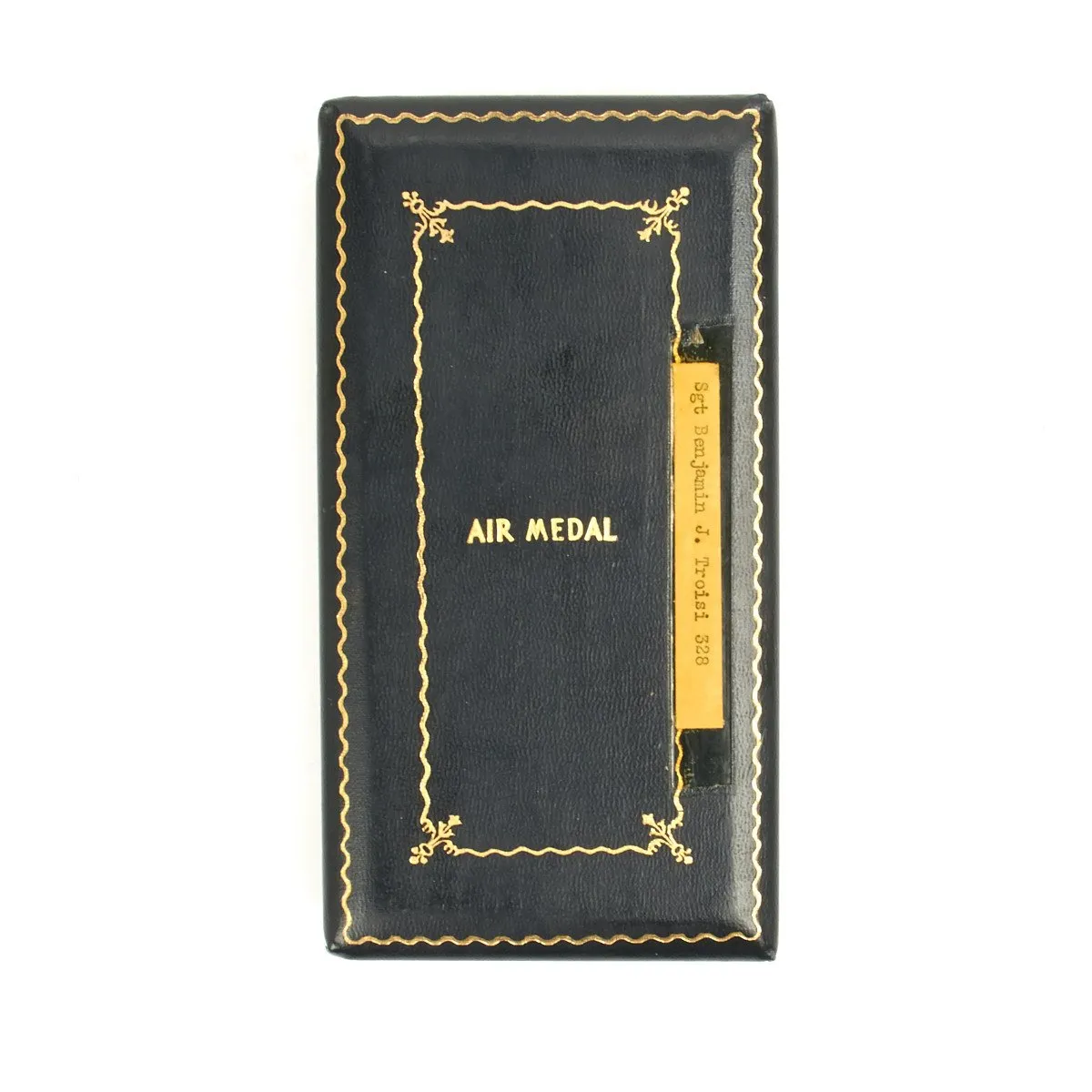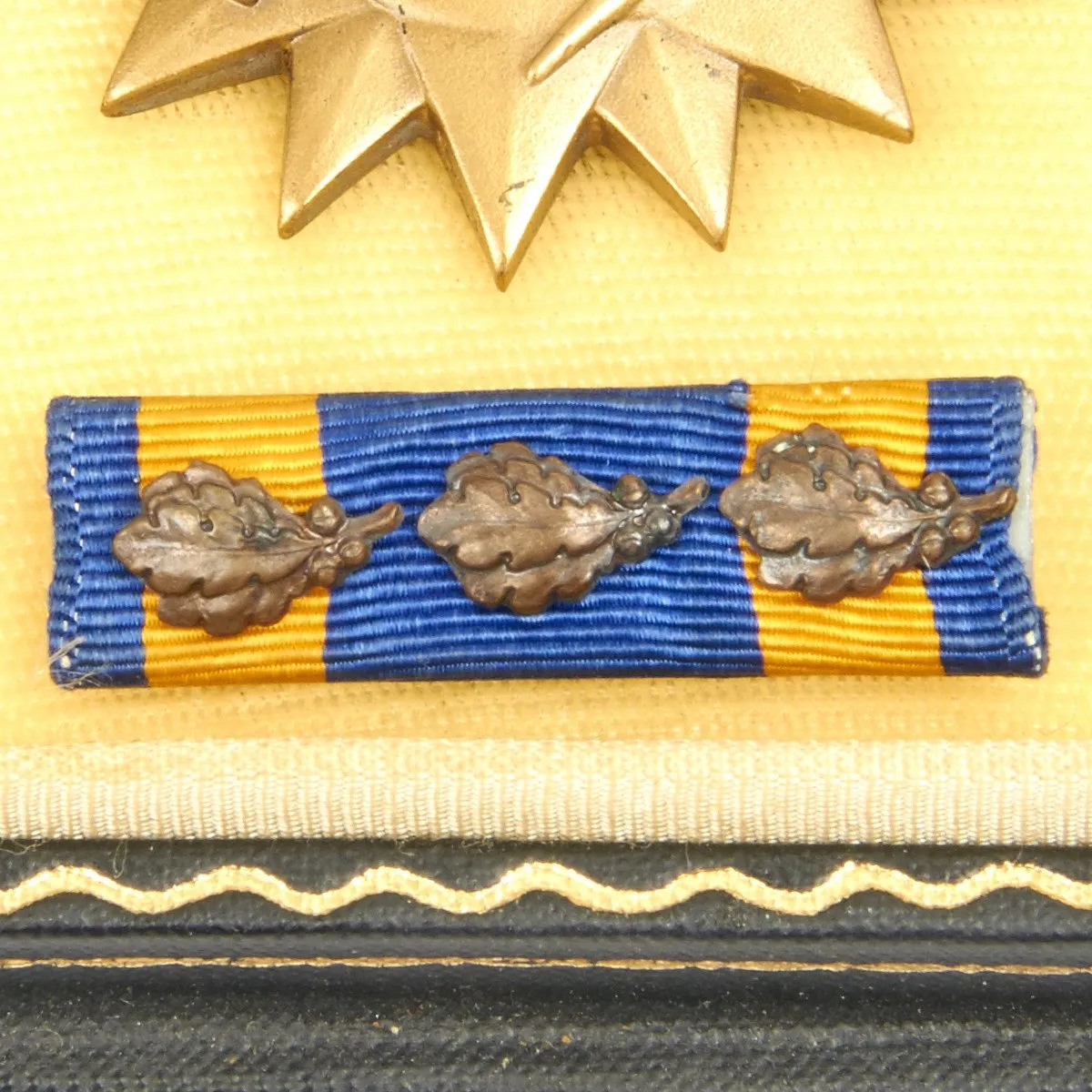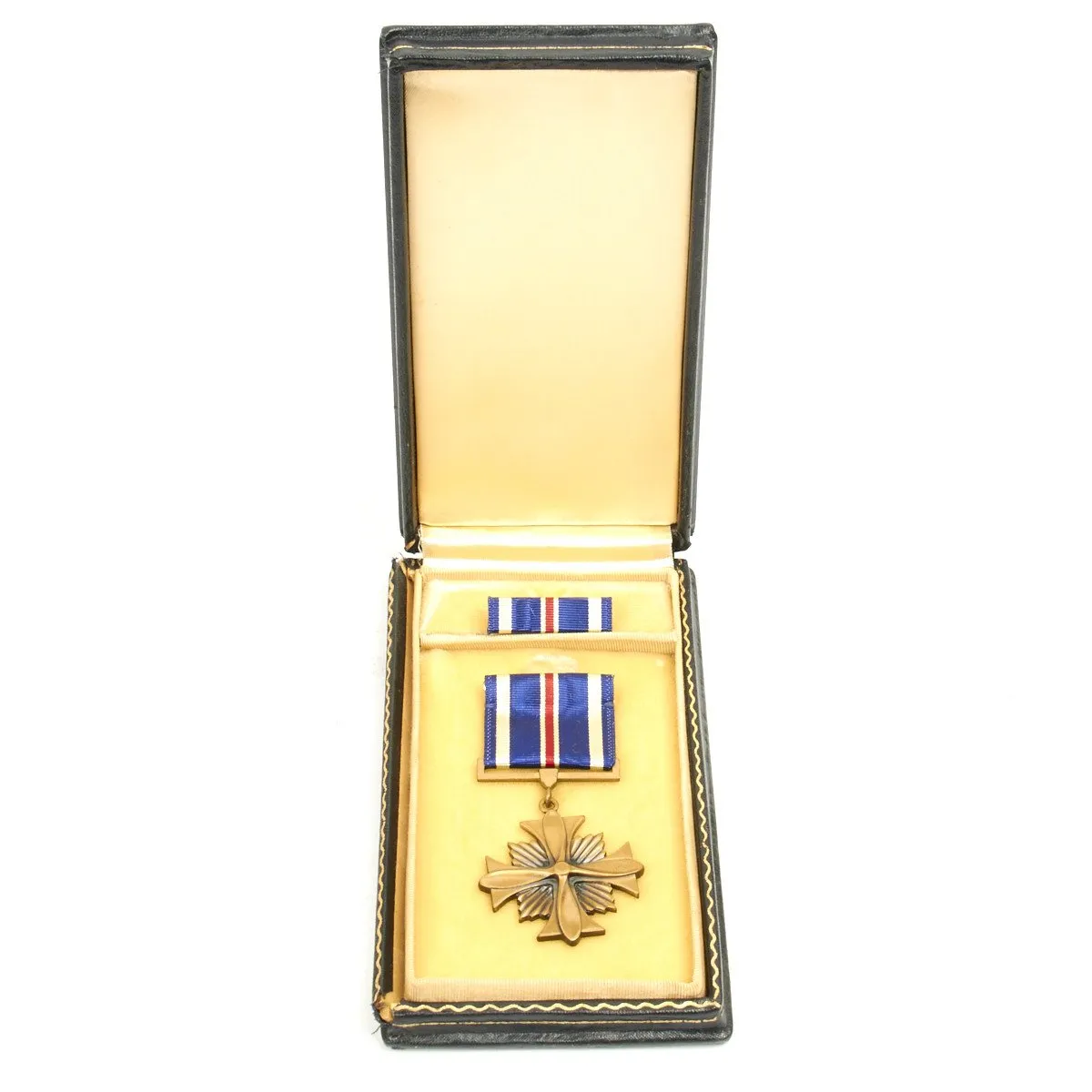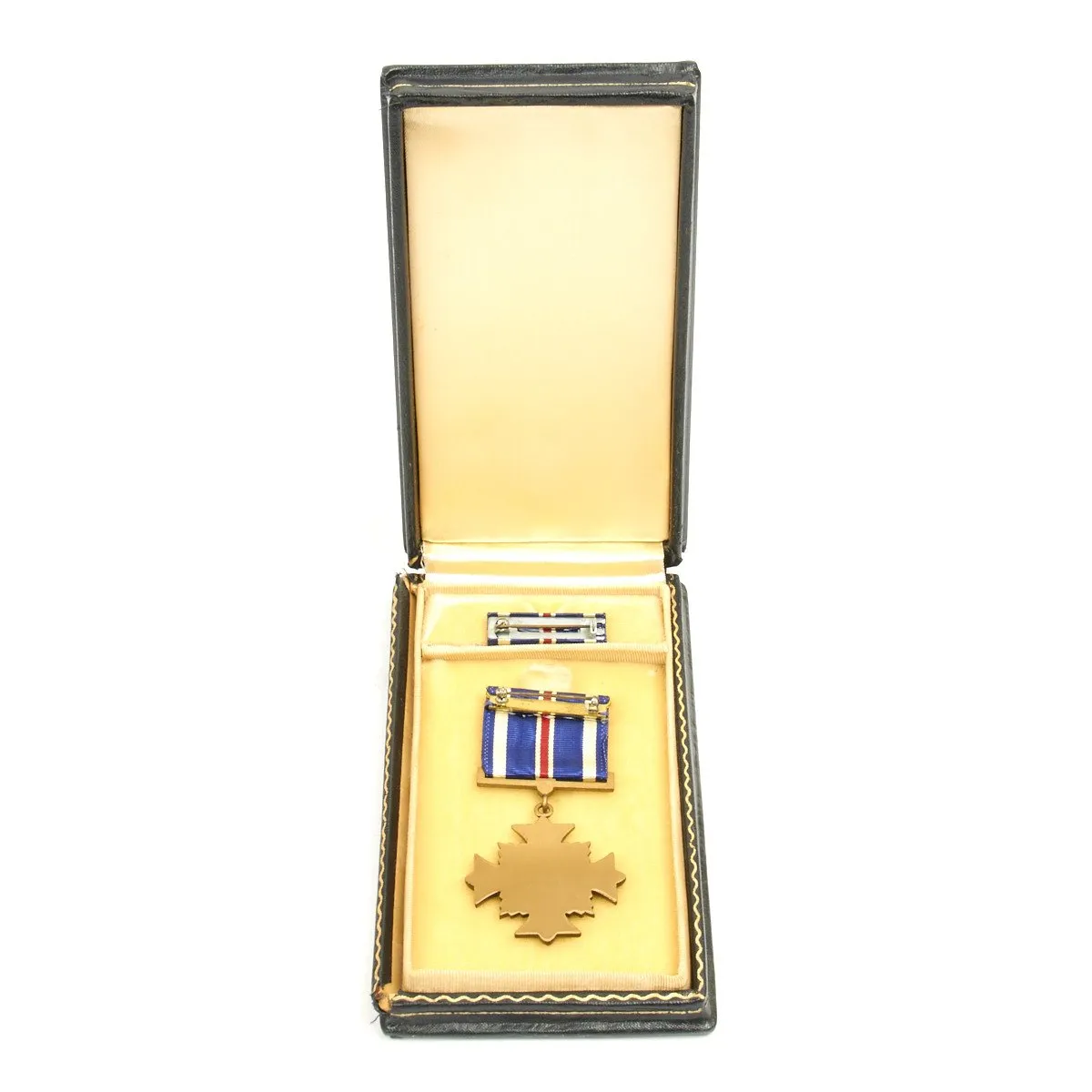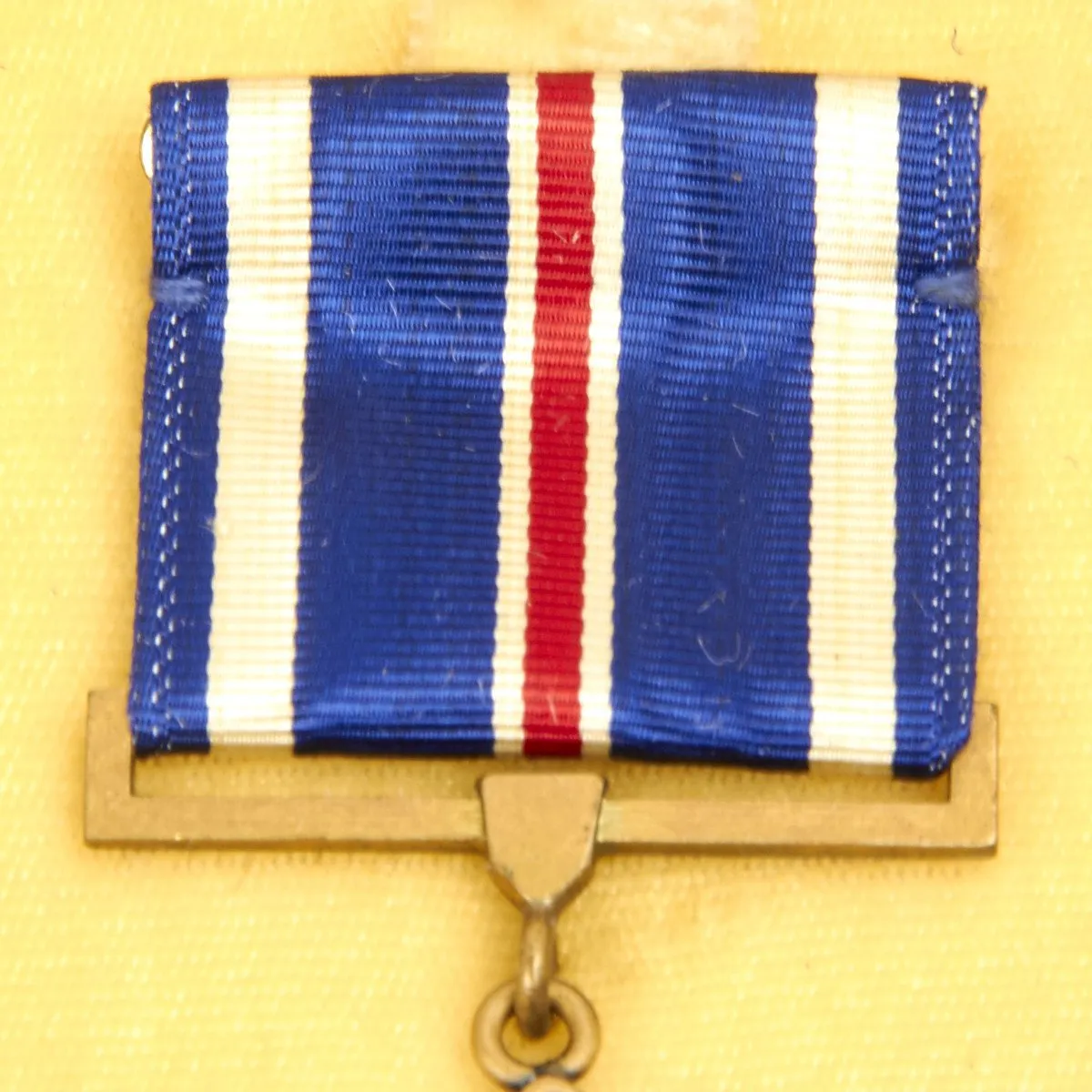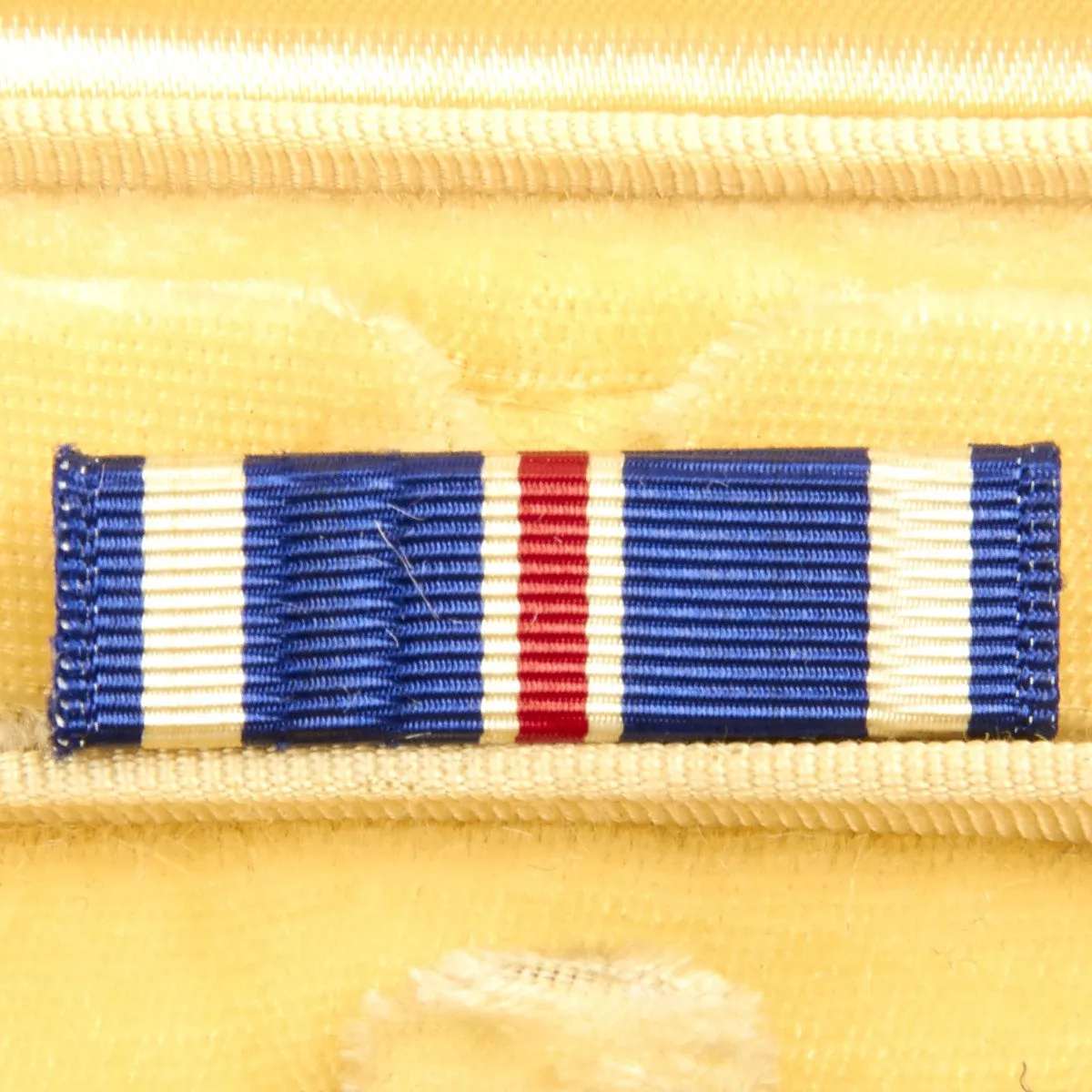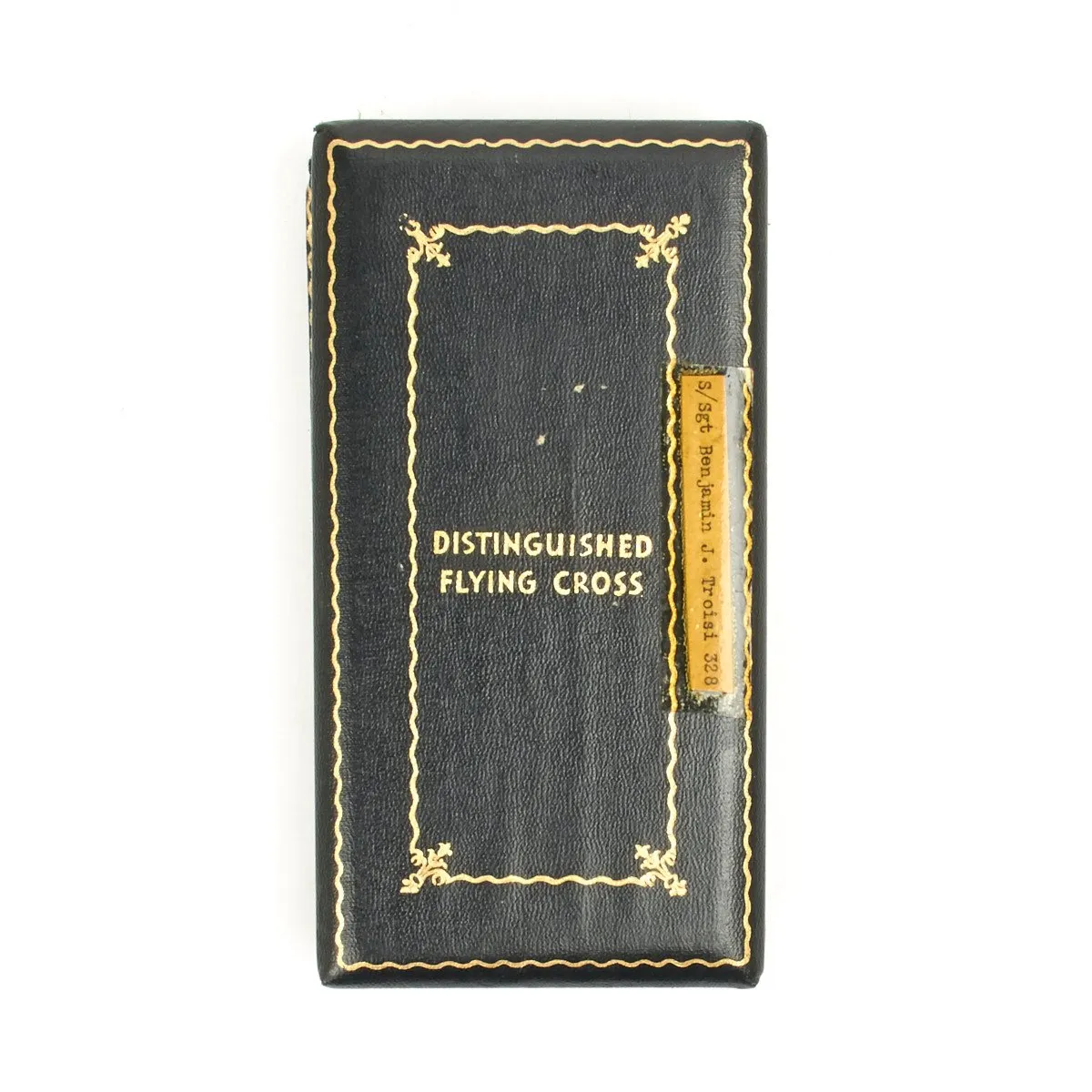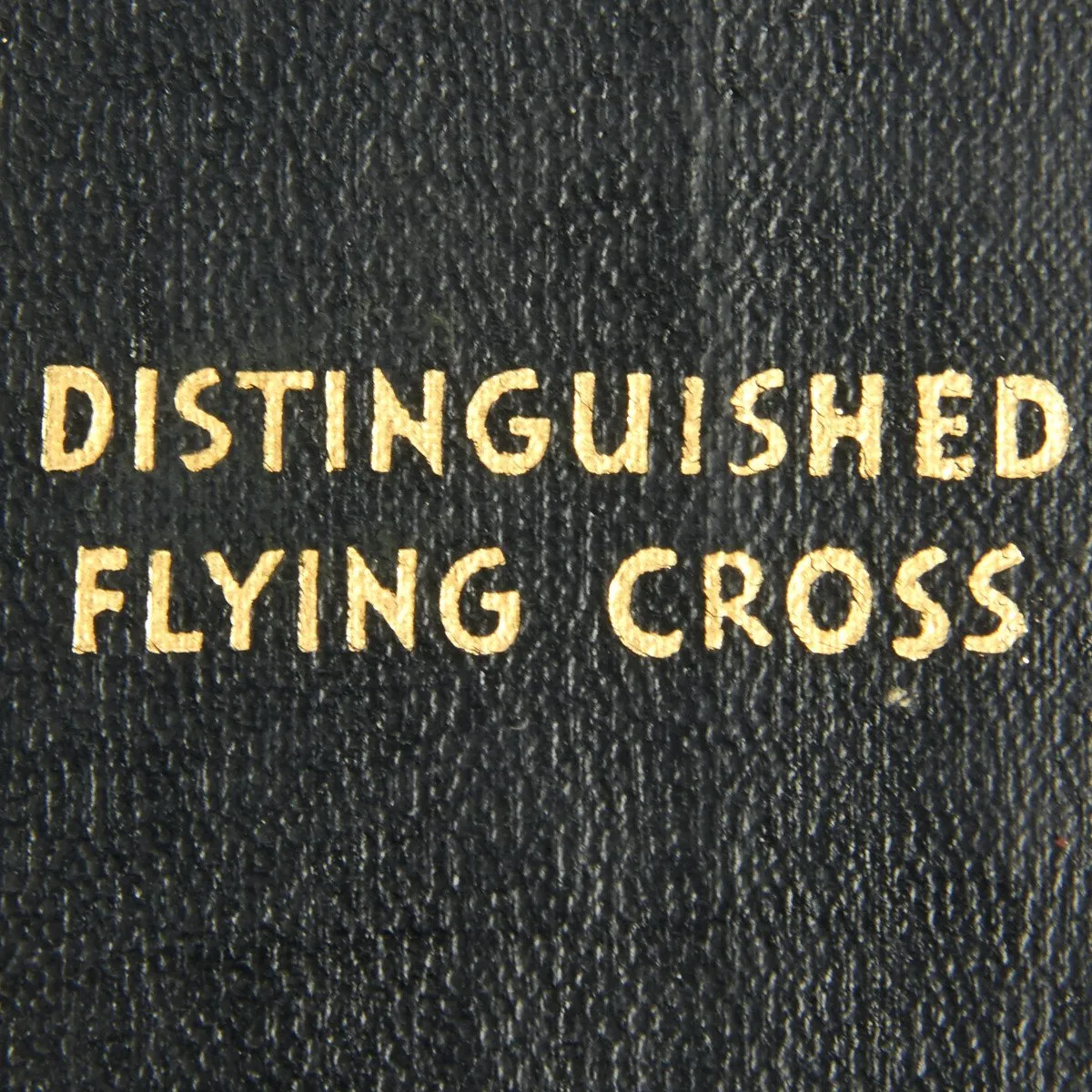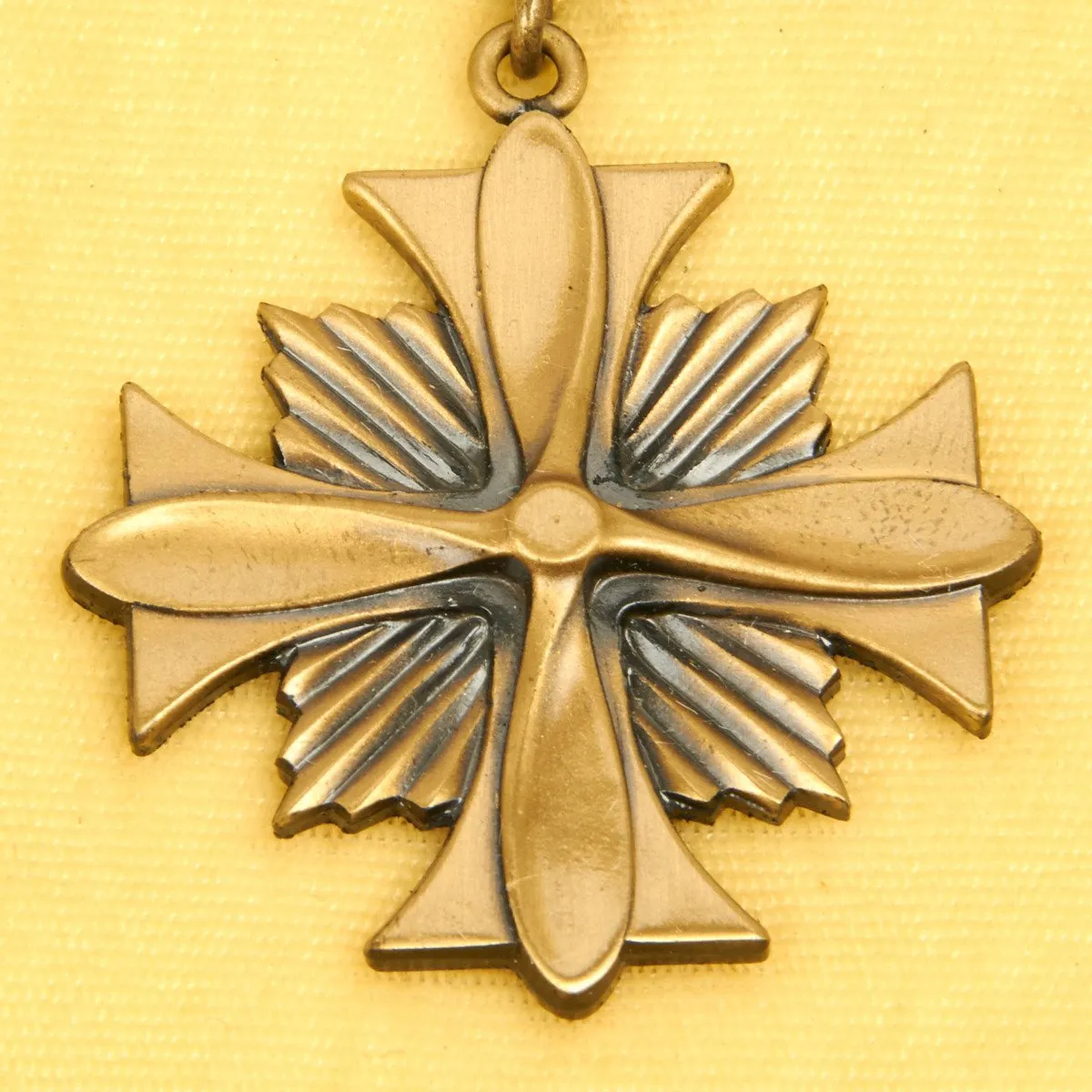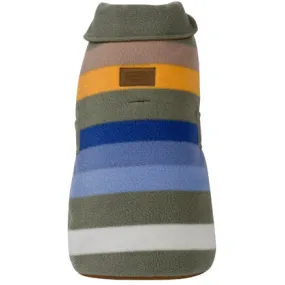Original Items: One-of-a-kind set. This is an incredible set obtained directly from the veterans family. Staff Sergeant Benjamin Joesph Troisi from Lycoming County, Pennsylvania was a sergeant in the 8th Air Force 328th Bombardment Group who enlisted on the 17th September, 1942. The 328th was activated January 28, 1942, and earned a Distinguished Unit Citation for a maneuver in Rumania. He was the left waist gunner and flew as a member of the B-24 Liberator Duration Baby crew captained by Ross Baker.
Here is a story recounted by Ed 'Cotton' Appleman the nose gunner of "Duration Baby" that was published in the book:
We Were Eagles Vol. 3: The Eighth Air Force at War June to October 1944
by Martin Bowman
We were on a wholesale raid today, practically all of Germany being hit by different groups. Our target was Münster and bombing again was by PFF through 10/10 overcast. About 200 planes were in the formation. No fighters were seen but flak was terrifically heavy although not too accurate. Navigational error took us across one end of 'Happy Valley', where flak was heaviest. Very little damage resulted. Joe Troisi the left waist, received a small frostbite blister on ear, and Joe Bleir, the tail gunner, almost received the same on feet and legs when part of his suit went out. I wasn't any too warm myself and had to continually move my hands and feet to keep up the circulation. Twenty-Seven to go. Four hours, forty minutes.
Included in this exceptional set is an original size 38 type A-2 leather flight jacket. It was professionally relined during the war to have a heavy synthetic fur interior and fur lined collar for added warmth (Troisi was getting forstbite after all!). The jacket features some amazing aspects:
Front:
USAAF 328th Bomb Squadron, 93rd Bomb Group, 8th Air Force Jacket Patch. The squadron patch shows a white whale (aka "Moby Dick") wearing an Uncle Sam top hat. (These patches by themselves are worth $850!)
Leather name tag that reads B.J. TROISI
Intricately painted WWII Aviator Aerial Gunner Wings.
Rear:
Fantastic nose art of the B-24 Liberator DURATION BABY with 30 bombs falling onto a flaming swas. The quality of paint used was exceptional as the colors remain vibrant and details are very crisp. Certainly one of the very finest A-2 paintings we have ever encountered.
Also included with this grouping are the following medals awarded to Staff Sergeant Benjamin Joesph Troisi in WW2.
WWII Air Medal in original presentation case with medal ribbon, bar, and 3 oak leaf clusters!
WWII Distinguished Flying Cross which was
This is an exceptional grouping with provenance providing a complete vision of one heros service in the greatest war ever fought.
History of the 328th BG:
Established in early 1942 initially as a B-24 Liberator reconnaissance squadron, flying antisubmarine patrols. Later was redesignated as a heavy bomb group; trained under Third Air Force in Florida. Completed training in late 1942; deployed to the European theater of operations (ETO) as one of the initial heavy bomber squadrons assigned to VIII Bomber Command in England, September 1942.
Engaged in long-rang strategic bombardment operations over Occupied Europe. Deployed to IX Bomber Command in Egypt in December 1942; operating from airfields in Libya and Tunisia. Raided enemy military and industrial targets in Italy and in the southern Balkans, including the NSDAP-controlled oilfields at Polesti, Romania, receiving a Distinguished Unit Citation for its gallantry in that raid. Also flew tactical bombing raids against Afrika Korps defensive positions in Tunisia; supporting British Eighth Army forces in their advance to Tunis, in September and October 1943.
Returned to England with disestablishment of IX Bomber Command in North Africa. From England, resumed long-range strategic bombardment raids on Occupied Europe and NSDAP Germany, attacking enemy military and industrial targets as part of the United States' air offensive. The squadron was one of the most highly decorated units in the Eighth Air Force, continuing offensive attacks until the German capitulation in May, 1945.
Returned to the United States in June, 1945; being re-manned and re-equipped with B-29 Superfortress heavy bombers. Trained for deployment to the Central Pacific area to carry out very long range strategic bombing raids over Japan. Japanese capitulation in August canceled plans for deployment, instead became Continental Air Command (later Strategic Air Command) B-29 squadron.




